

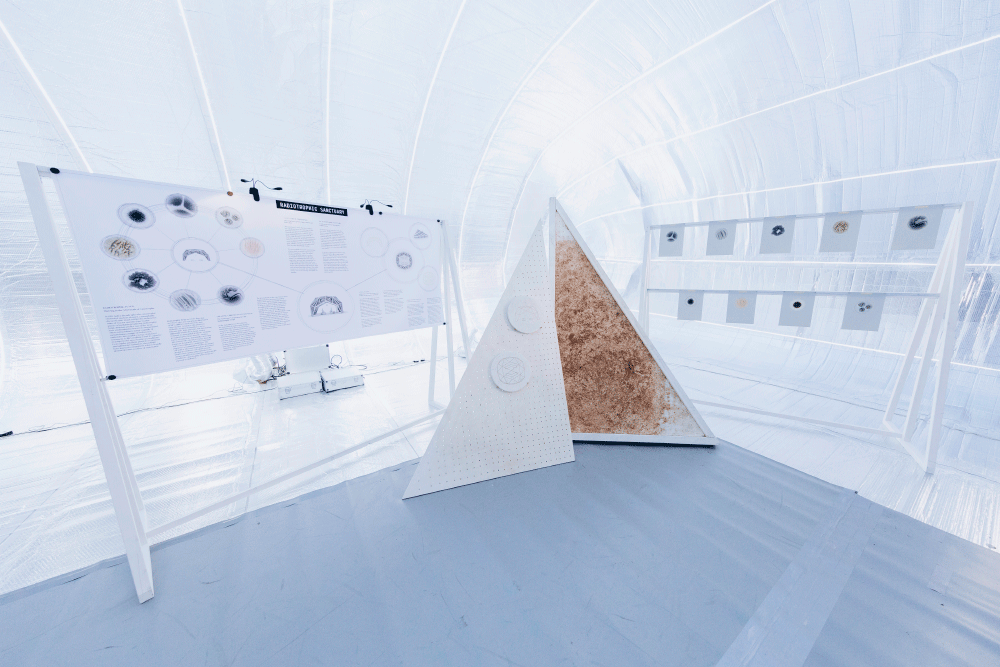
The Radiotrophic Sanctuary is a living infrastructure fostering interspecies cooperation between fungi and humans. Melanin-rich radiotrophic fungi envelop a biocomposite structure of triangular panels on a wooden frame, protecting visitors from radioactive and ultraviolet radiation while preserving structural materials. Through radiosynthesis, these fungi convert radiation into usable energy for growth. The sanctuary thus serves as both a protective refuge against ionizing radiation and a transformative site for anthropocentric reimagining.
Saša Spačal is a postmedia artist who merges research on living systems with contemporary art, emphasizing the interconnectedness between the environmental-cultural continuum and planetary metabolisms. Her artistic activities include developing nurturing biotechnological methodologies and interfaces that interact with both organic and mineral components of soil. Concurrently, she explores the fragility of posthumanist scenarios, intertwining mechanical, digital, and organic logic within the framework of contemporary biopolitics and necropolitics.
Luka Murovec is a Berlin-based independent spatial practitioner working at the intersection of architecture and art interventions in public spaces. His work strives to create inspiring situations that respect history and cultural heritage but are radically contemporary and committed to a better future for all living beings. Through a blend of experimental architectural methods, sculptural forms, and conscious use of materials, he constructs spaces that can serve as critical tools of cultural introspection.
Marko Vivoda is an artist, producer, and researcher, primarily known as the curator of the IZIS Festival and the artistic director of the HEKA laboratory under the Pina Association. His artistic practice spans art installations, scenography, and mentorship. Vivoda is also a co-founder of the Stran 22 collective and the IZIS Festival and served as co-curator of the Lighting Guerrilla (Svetlobna Gverila) festival in Ljubljana from 2020 to 2022. Currently, he is focused on the research and development of biomaterials, with an emphasis on utilizing local resources and waste to create sustainable and innovative art projects.
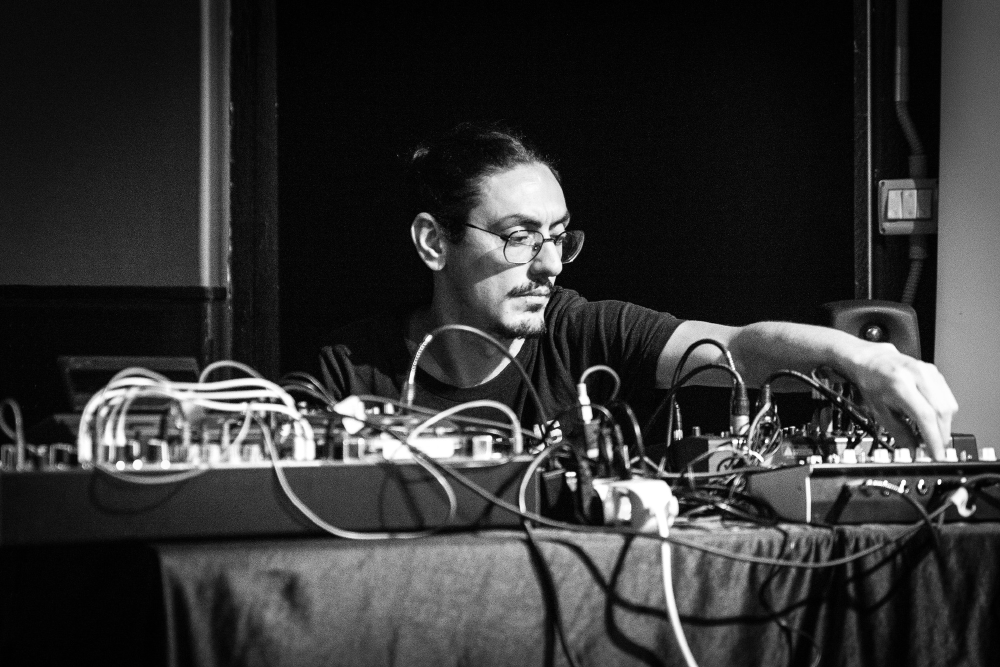
There is no sign of genre, nor dated music. Neither tempo nor correct sync—just space to fill with your creativity and movement to express your imagination.
Andrea Gulli has a PhD in mathematics and is a musician. He composes electronic music as a form of interaction between artistic and scientific disciplines. He performs with Maistah Aphrica, Orkester Brez Meja / Orchestra Senza Confini, and other international musicians.

In *Borderless Gestures*, Gildo Bavčević explores identity, boundaries, and shared experiences through two works. *2+3=5* is a photographic self-portrait merging national symbols and heritage via hand gestures and a T-shirt number, questioning belonging, division, and memory. In *Extremely Left Hedonism/Nomad Host*, a performance and multimedia installation, he becomes a nomadic host, uniting audiences over sardines and ćevapi. Cooking and sharing create a space of improvisation, interaction, and reflection on the fragile possibilities of togetherness.
Gildo Bavčević is a multimedia artist working across performance, video installation, film, photography, and sound. His practice engages deeply with political, social, economic, and environmental issues. He holds a PhD in practical studies in the field of new media from the Faculty of Fine Arts in Belgrade and works as an assistant professor at the Film and Media Department at the Arts Academy in Split.
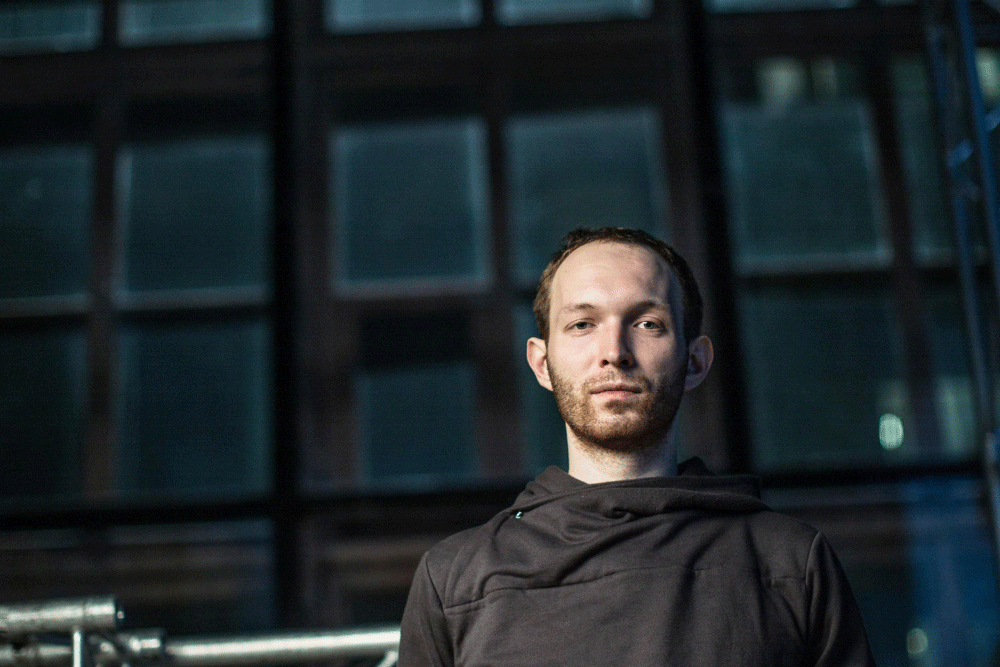
*Metaphase Soundmachine* pays tribute to the physicist Nick Herbert and his 1970s devices *Metaphase Typewriter* and *Metaphone*. It explores quantum entanglement through an object consisting of six rotating discs with magnets and sensors, controlled by a central Geiger counter detecting environmental radioactivity. The radiation levels influence disc speed; sound emerges when their phases align, creating endless variations through harmonic processing and system instability. The machine’s form visually recalls the symbolic biphoton notation of quantum entanglement — crossing orbital discs.
Dmitry Morozov, a.k.a. ::vtol::, is a transdisciplinary artist and researcher. He focuses on contemporary media arts, including sound, robotics, and installation, placing special emphasis on the link between emergent systems and new kinds of technological synthesis. He is currently based in Ljubljana, Slovenia.

Rogues denote things that live with you. They are multi-sensory and multi-modal entities, sitting somewhere, in an exhibition space, or a private space, or outside waiting for the birds. Rogues appear in different forms, but their size is somewhat of the magnitude of a human child. Rogues emit sound and image; they take in sensations of their surroundings.
Hanns Holger Rutz is an artist-researcher working in sound installation, improvisation, electronic music, and other digital and non-digital media. He is interested in algorithmic experimentation, interdisciplinarity, and collaborative contexts. He is professor of Artistic Research at Gustav Mahler Private University of Music Klagenfurt.
www.sciss.de
Nayarí Castillo is an artist-researcher specialized in installation art and art in public space. Her often site-specific interventions engage with history, time, and space, emphasizing experiments in perception and engagement. She has over two decades of artistic experience, including academic and large-scale transnational projects.
www.nayaricastillo.com
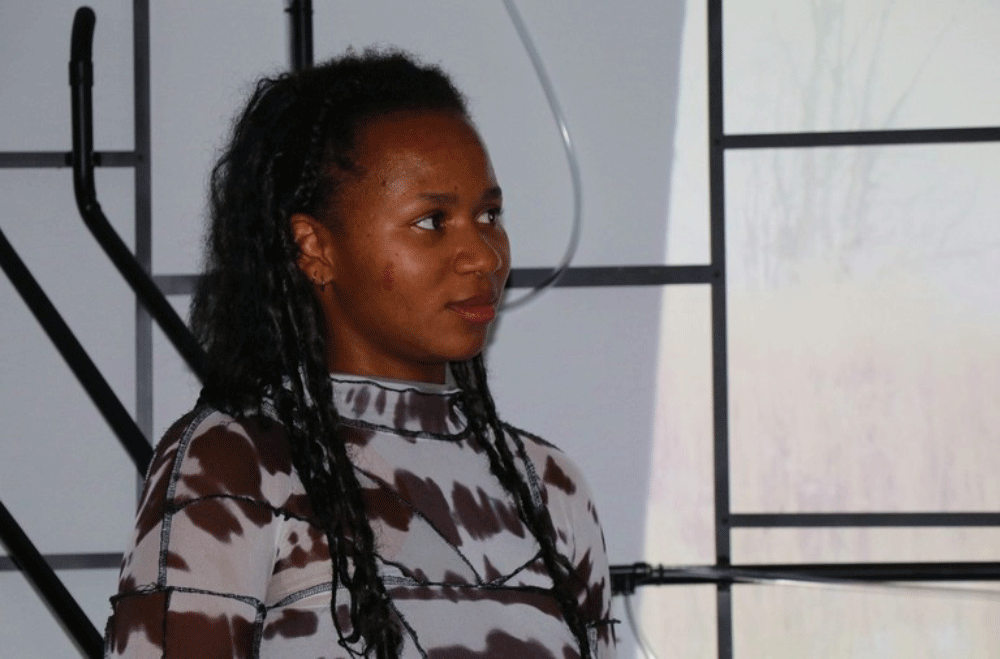
Likvidacija je hibridna prostorsko specifična instalacija in film, ki dokumentira razlastitev določenih zgodovin in industrij na Nizozemskem skozi nepremičnine. Instalacija je sestavljena iz vlažilnika za rastlinjak, umeščenega v več nepremičnin, ki jih nizozemska vlada kot lastnica prodaja na spletnih dražbah.
Brianna Leatherbury je umetnik_ca s sedežem v Amsterdamu, katerih nedavna dela se začnejo z raziskovanjem, ki je hkrati osebno in strukturno. Ustvarjajo abstraktne sisteme, ki raziskujejo materialne učinke ekonomskih sil skozi individualne odnose. Z uporabo kombinacije kiparstva, performansa in dokumentacije njihova dela pričajo o učinkih naše sodobne ekonomije, pri tem pa preizprašujejo prisotnost in iščejo nove možnosti odnosov.
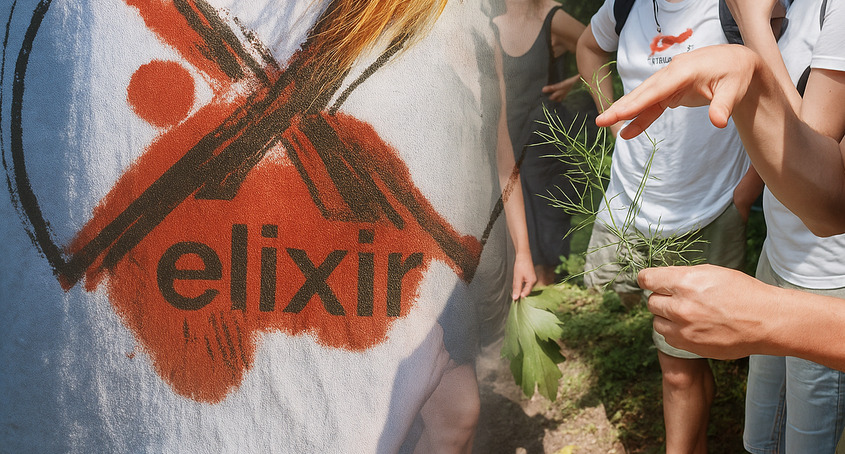
A slow, sensory gathering led by the eliXir collective — Jatun, Vita, and Uroš — alongside Dr. Francesco Boscutti from ReThinkable. Together, we’ll walk, listen, taste, cook, and breathe with the landscape. It’s not a tour, and it’s not a performance — it’s a shared pause in motion, a playful, embodied way of learning from the Soča river and what grows around (and within) us.
Jatun Risba is a transmedia artist and bodymind practitioner working with movement, matter, and breath to create transformative experiences. Their practice blends ecology, esoteric knowhow, science, and storytelling.
Vita Matjac (eliXir collective / xMobil-2025 resident) is a wild food expert and forager with a background in ecological restoration. She focuses on reweaving relationships between people, plants, and places through hands-on knowledge and local plant literacy.
Uroš Brezavšček (eliXir collective / xMobil-2025) is an innovator and systems designer focused on sustainable tools and food autonomy. He develops mobile infrastructures and DIY solutions for off-grid living and collective making.
Dr. Francesco Boscutti is a researcher and educator working across ecology, botany, and public health. With deep roots in participatory science and landscape pedagogy, he brings clarity, wit, and local knowledge to his outdoor teaching.
Enrico Policardo (ReThinkable) is the art director of ReThinkable, a Gorizia native and London-based photographer and avid amateur forager. His work bridges visual storytelling, environmental programming, and embodied research — often outdoors, often shared.

Feeling a place — when two entities meet, a conversation sometimes starts flowlessly. No one knows the end. Only one of them sets a beginning. Multiple results, multiple triggers, unknown stories. Processed by the randomness of our own history.
Mattia Romanut performs as Happy Error in electronic, improvised, experimental, and DJ solo works, and with ACME and Stringe as a songwriter and guitarist.

An evolving soundscape to tune in, drift in or move through. Expect no stage, no start time, and no sharp edges — just ongoing sonic contributions by musicians working with guitar, electronics, and modular synths. You’re welcome to lie down, dance, or just float in and out of the sound.
Piero Iuretig is a guitarist, composer, and music educator with degrees in musicology (DAMS) and jazz (Trieste Conservatory). Active since 2001, Iuretig has performed across a range of genres — including jazz, blues, progressive rock, funk, and Balkan music — and in diverse formats, from duos to big bands.
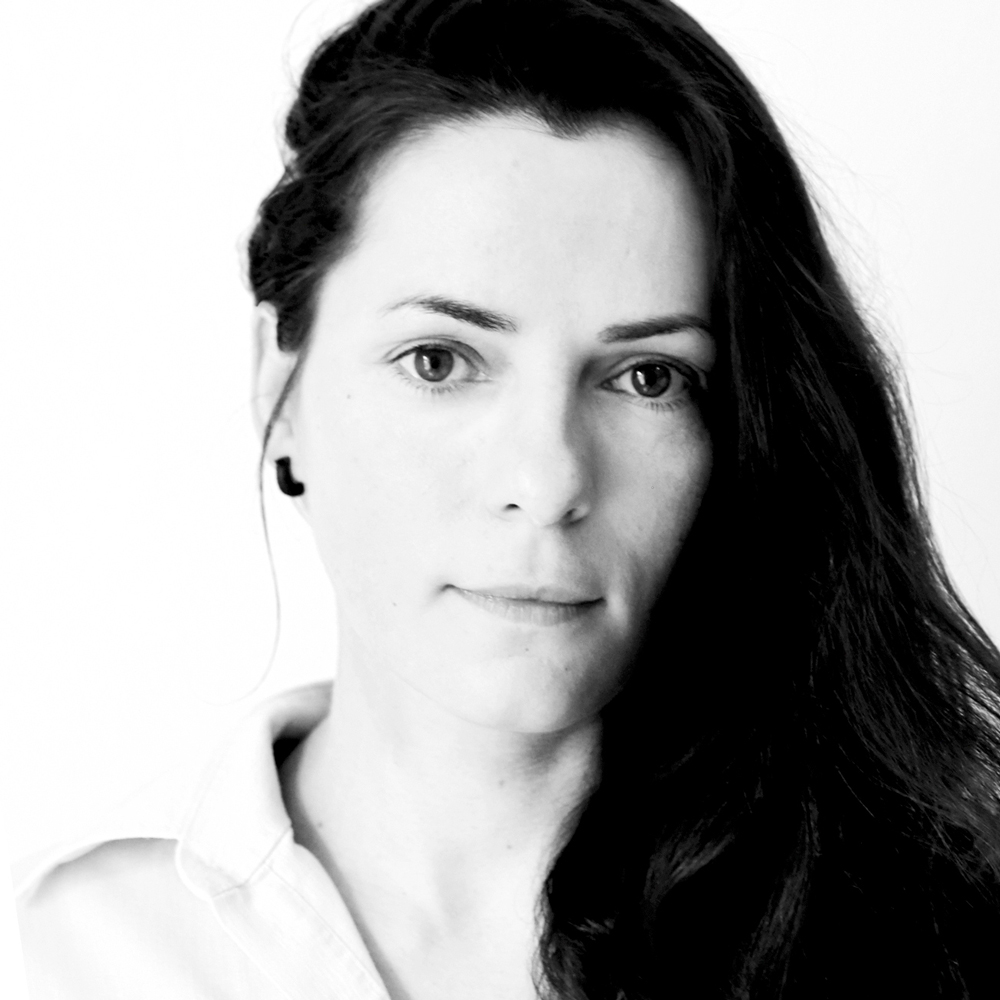
Almanac for Alternating Atmospheres is a speculative cultural tool and interface for knowledge exchange in the era of climate crisis. By investigating shifts in the cultivation and migration of plants due to the impact of climate change, it aims to facilitate connections between regions, traditions, and local ecological knowledge.
Sybille Neumeyer is an interdependent artist and post-disciplinary researcher with a focus on environmental issues and ecological relationships. In her recent and ongoing research, she is investigating mediations of climate and weather and transformative narratives directed towards biocultural diversity and social and ecological justice.
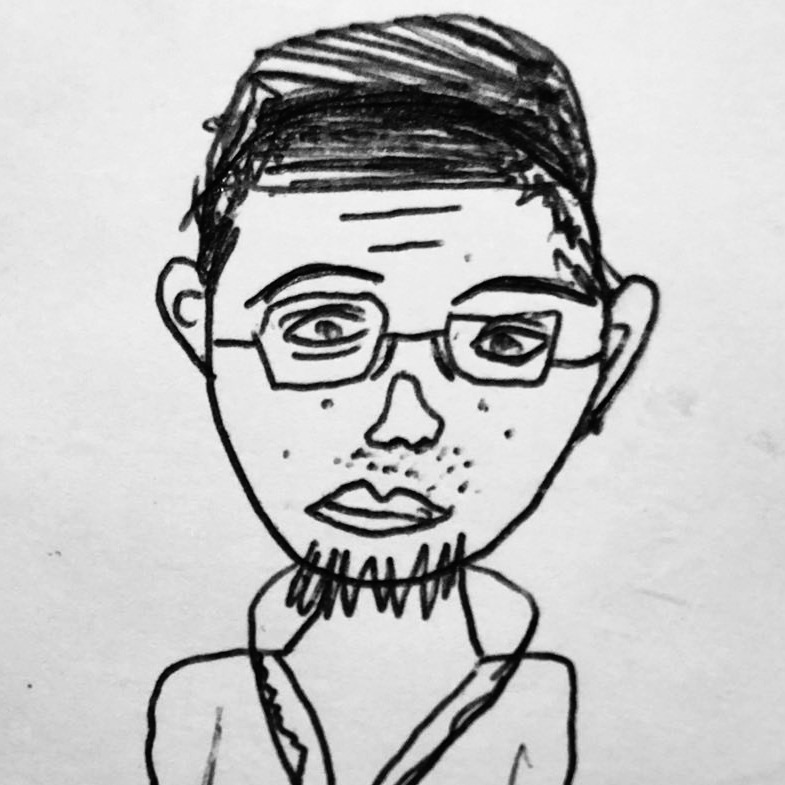
The world is facing multiple crises. To get through them, we need new ways of living together – humans, machines, and the environment as one. Endosymbiotic computation is one vision: computers, organisms, and technologies working as a cooperative, self-sustaining system. It’s about taking responsibility together instead of pushing problems away – and building a survival machine we all programme, for all of us.
Shintaro Miyazaki is a (junior) professor of Digital Media and Computation at Humboldt-Universität zu Berlin. Around 2010, he first wrote on the history of computers, on algorithms and their rhythms. After that, his interest in leftist theory and Felix Guattari arose. In 2023, he published a short book on dance, modelling, and commoning – Counter-Dancing Digitality. Now he works on endosymbiosis and cellular new media.
https://amor.cms.hu-berlin.de/~miyazash/
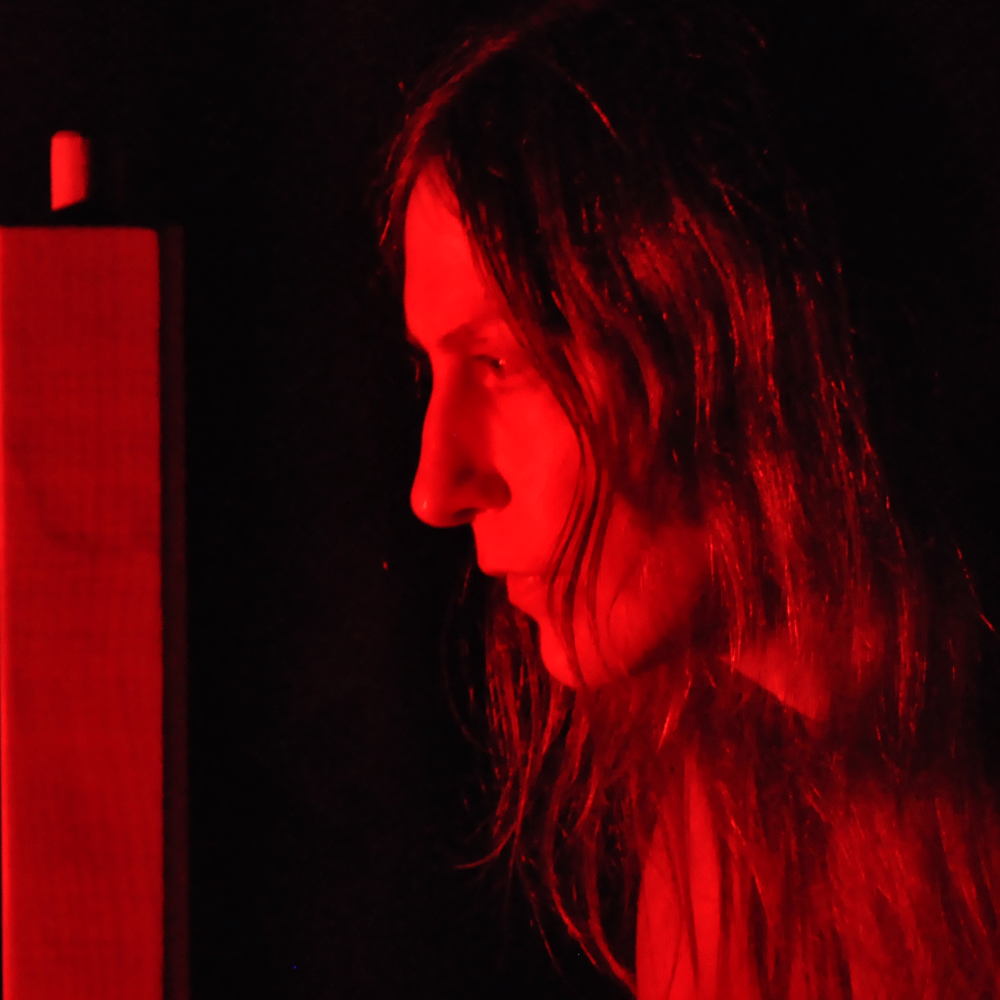
How to Live a Life... is the final act of a 60-minute performance lecture. Inspired by cross-border memories and landscapes, it explores transgenerational healing, regeneration, and interdependence. It was developed during the Peripheral Visions residency by IoDeposito, with scenography created in collaboration with New Life Contract.
Jatun Risba is a transdisciplinary artist who transforms fear, ignorance, and secrecy into healing, growth, and self-empowerment. Their practice cultivates interspecies reciprocity and sensory ecology, engaging with wisdom traditions and subversive uses of technology to create life-affirming artworks that challenge the status quo and expand human perception.
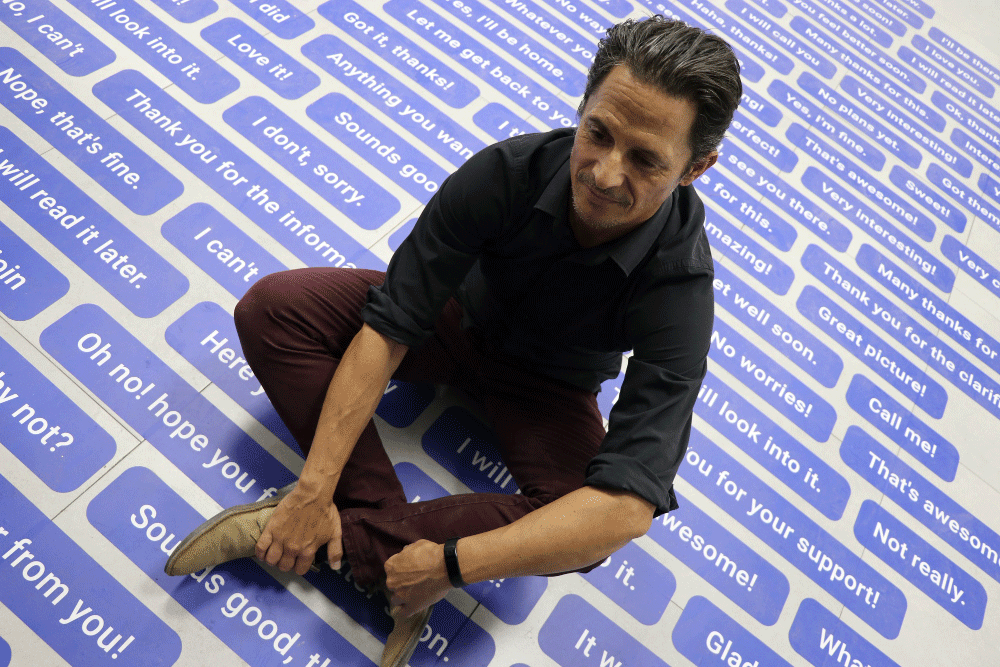
To celebrate 10 years of the Remix of Identity project, Morski presents a hybrid DJ/live set featuring tracks produced through workshops, remix contests, and original reinterpretations of Istrian and minority musical traditions. Using Ableton Live and controllers, the performance blends traditional sound samples into contemporary electronic music.
Morski (Marino Jurcan) is a producer, DJ, and multimedia artist active since the 1990s. Known for connecting electronic music with local sound heritage, he also directs Metamedia new media programmes in Pula, Croatia.
https://metamedia.hr
https://metamusicproduction.bandcamp.com
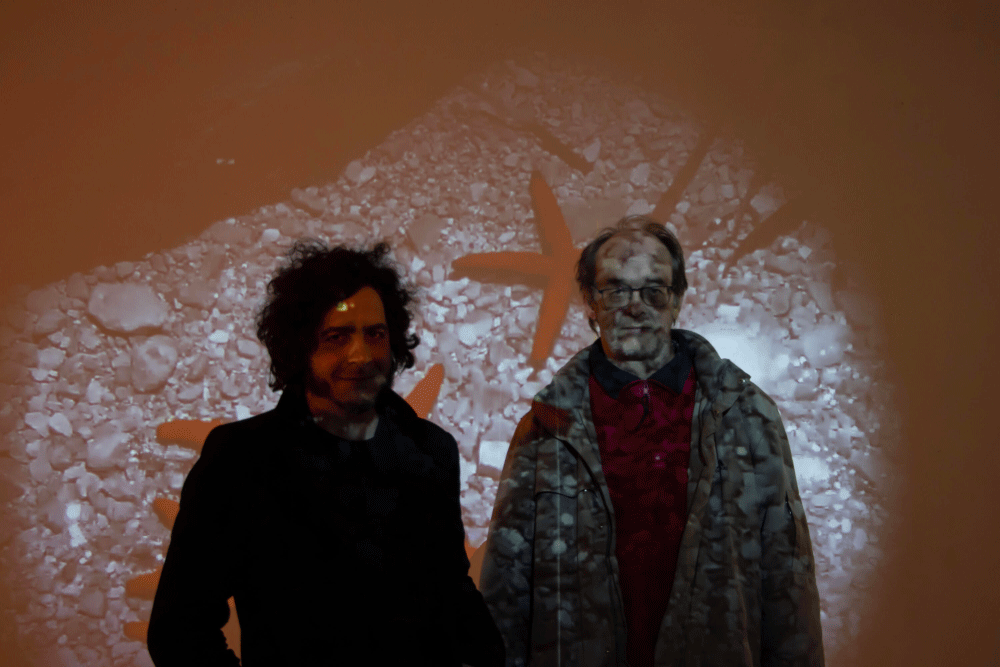
A video-sound multi-channel spatial installation by two authors. Subtitle: Resonant Space. The played videos drive the dynamics of instantly generated sounds, which take on the nature of subtle sound resonances. The phrase Resonant Spaceis a tautology. Resonances do not arise outside of space, and space is not without resonances.
Francisco Tomsich is a visual artist and writer born in Uruguay in 1981. Since 2003, he has been working in the field of exhibitions, publications, stage works, research models, and pedagogical levers – in different media, languages, and dialects. He is a trailblazer – a pathfinder – a pathfinder based on traces, an iconographer of music, a painter of poems, an allegorist of politics, a South American expressionist monster with something of a Japanese alchemist inside, who deals with anarchitecture – a walker through Yugoslav histories, and an ardent gardener of fragments.
Borut Savski is an intermedia artist who places great emphasis on sound – while simultaneously using technical solutions for unusual instruments and autonomous sound and visual structures/sculptures. The microsocial situations he enters and/or creates are closely related to this. The basic approach is at the level of metaphors – points where transfers/translations of meanings/motives/motivations between different discursive fields occur.

Nizke frekvence, ki jih človeško uho ne more zaznati, spremenijo črno površino v subtilno, utripajoče gibanje. Gre za nizkofrekvenčno vibracijsko potopitveno instalacijo, ki naredi infrazvok viden in prostorsko zaznaven. Vibracije, ki jih ustvarjajo elektromagnetni pulzi, se preoblikujejo v otipljivo in dinamično obliko. To je igra med statičnim in dinamičnim: podoba in prostor sta v nenehnem valovanju. Občinstvo okoli predmeta postane del kinetične interakcije.
IP Group [Identity Problem Group] je studio, specializiran za projekte na presečišču sodobnih umetniških disciplin, kjer tehnologija deluje kot povezovalni element, saj združuje zvočno, vizualno in uprizoritveno umetnost z arhitekturnim prostorom. Osrednje področje prakse IP Group je načrtovanje in izvedba instalacij, ki vzbujajo pomenljive čutne izkušnje ter spodbujajo domišljijo skozi multimedijske akcije.
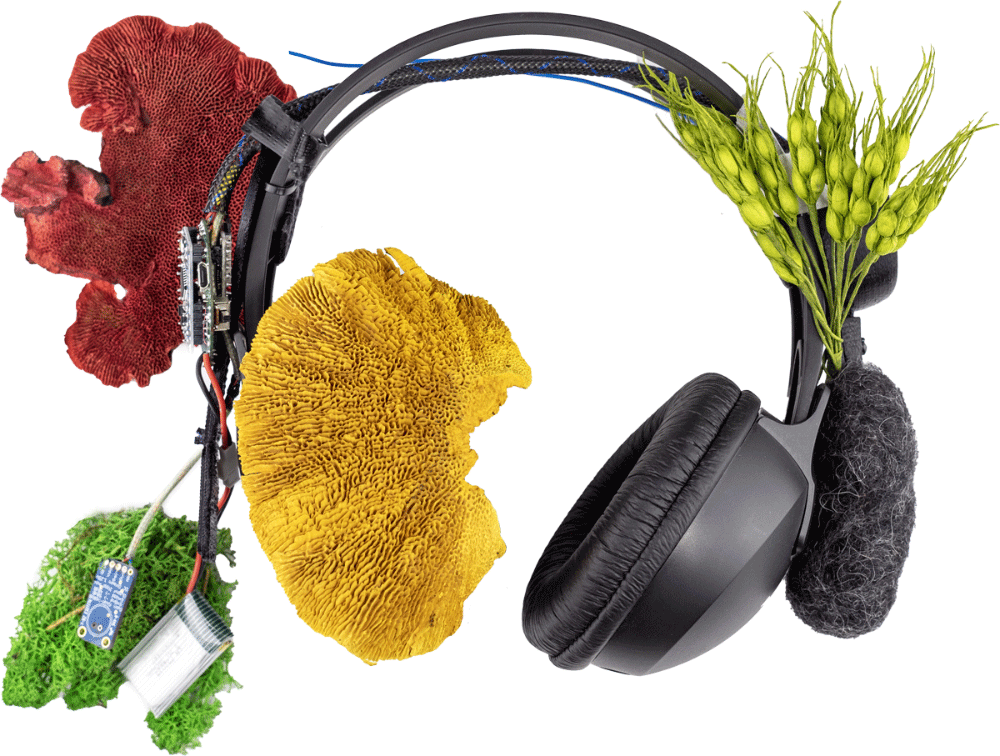
The speculative sound story garden GOround is experienced, listened to, and walked through by the audience during a stroll in the park. The work highlights the relationship between humans and more-than-human others in the context of colonialism and the migration of plants. In light of the ecological crisis and possible better futures, this relationship must be questioned and traversed. Through the prism of different temporalities of humans and plants, which seemingly do not allow for encounters, garden GOround takes us along the paths of possible futures for our tense, noisy planet. Can we learn from plants in order to arrive at a more solidary future?
Irena Pivka develops artistic practices focused on sound-geolocation performances. Together with co-author Brane Zorman, she tunes space with social reality and speculation by walking and listening. She is a producer at the Cona Institute and leads the TO)pot Festival of radical sound walks.
Brane Zorman is a composer, intermedia artist, and producer at Cona. He explores presence, perception, and the placement of sound using both old and new technologies. In 2022, he received the Palma Ars Acustica Award for his composition Spirit of Trees/Touch.
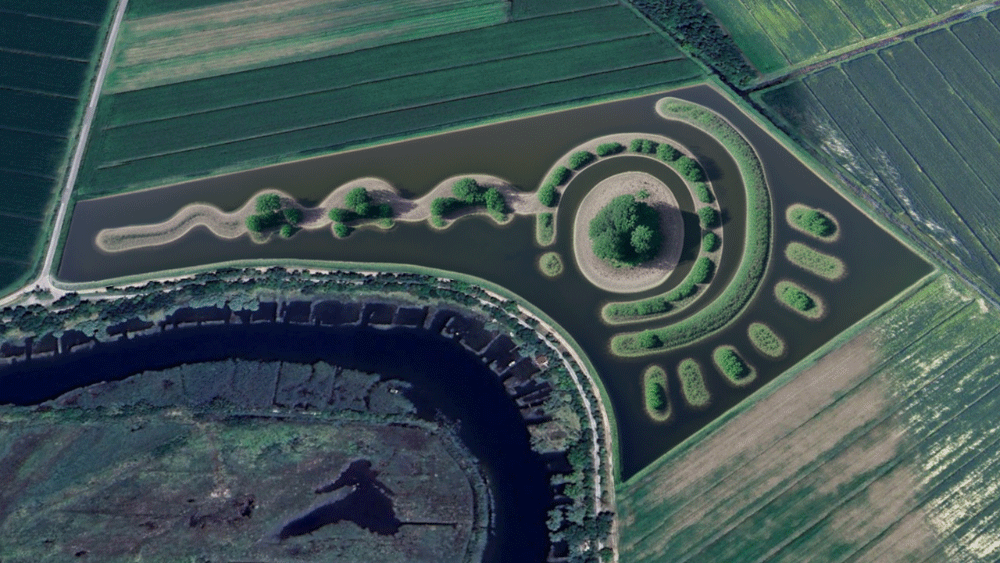
Wetland Designers is an ecological participation project started at Festival dell’Acqua di Staranzano that involved students and the community in creating a new wetland through archive research, workshops, and artificial intelligence software, in collaboration with Foce dell’Isonzo Natural Reserve and Regione Autonoma Friuli Venezia Giulia.
Liminal Research ETS is an interdisciplinary association that bridges art, science, and society through creative science communication projects. It develops immersive experiences, installations, and workshops to foster critical thinking, innovation, and scientific citizenship. Based in Trieste, Italy. More at
www.liminalresearch.eu

FuelNoises is a techno-theatrical concert exploring the power of AI and misinformation. An anti-hero spirals into radicalization through algorithmic misinformation, while sound, light, and visuals react to the performer’s body in real time. Drawn from climate change disinformation, the work exposes society’s fragile balance between digital empowerment and manipulation.
Stefano D'Alessio is a media artist, performer, composer, and educator at various universities across Europe. He creates audio-visual compositions, new media performances, and interactive installations, exploring how the internet shapes the behavior and body of humans. His practice centers on human-machine interaction, where sound, light, image, and physical presence perform together.
The guest performance *FuelNoises* at the Pixxelpoint Festival 2025 was supported by the touring subsidy from the Federal Ministry for Housing, Arts, Culture, Media and Sports of Austria.

*Krasna si, bistra hči planin in toksinov…* is a visual-ethnographic study of the impacts of industrial heritage in Kanal ob Soči and the surrounding Soča River area. Three students—an environmentalist, a humanist, and an artist—document the personal stories of residents, the interplay between the river’s tourist potential and the region’s industrial past, as well as the resulting environmental and health consequences. Interviews, artistic photography, and environmental data create dialogue, visualize the unseen effects of the toxic heritage, and raise public awareness. The outcome is a pop-up exhibition featuring a performative arrival by train from Anhovo.
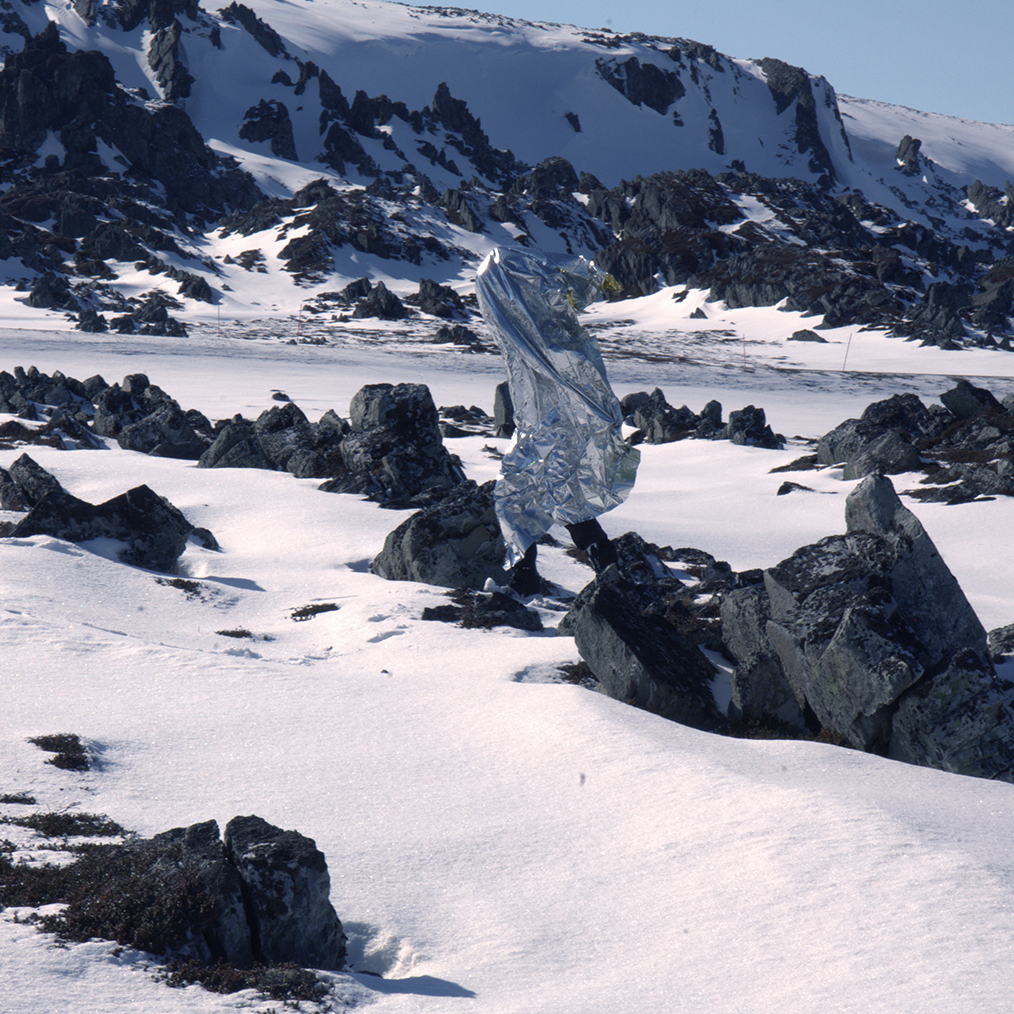
*Astronaut(s) without a Spaceship / Catching the Wind* merges speculative space exploration with ecological reflection. By linking terraforming discourse with Earth’s fragility, the project shifts focus from outer space to planetary care. The performances embody wind and landscapes, critiquing extractivism while proposing sustainable, empathetic relations between humans, technology, and the environment.
Ivana Tkalčić is a Croatian multimedia artist and researcher with degrees in economics and fine arts, and a graduate of WHW Akademija. She has exhibited internationally and received numerous nominations and awards, including the Radoslav Putar Award and the HPB Grand Prix, and has participated in numerous international residencies.

Bellen has been shaking clubs and festivals across Croatia and beyond, blending break, bass, acid, and jungle into raw, high-energy sets. Offstage, he digs deep for dirty beats and crafts fresh productions, pushing underground sounds forward with a restless curiosity and uncompromising style.
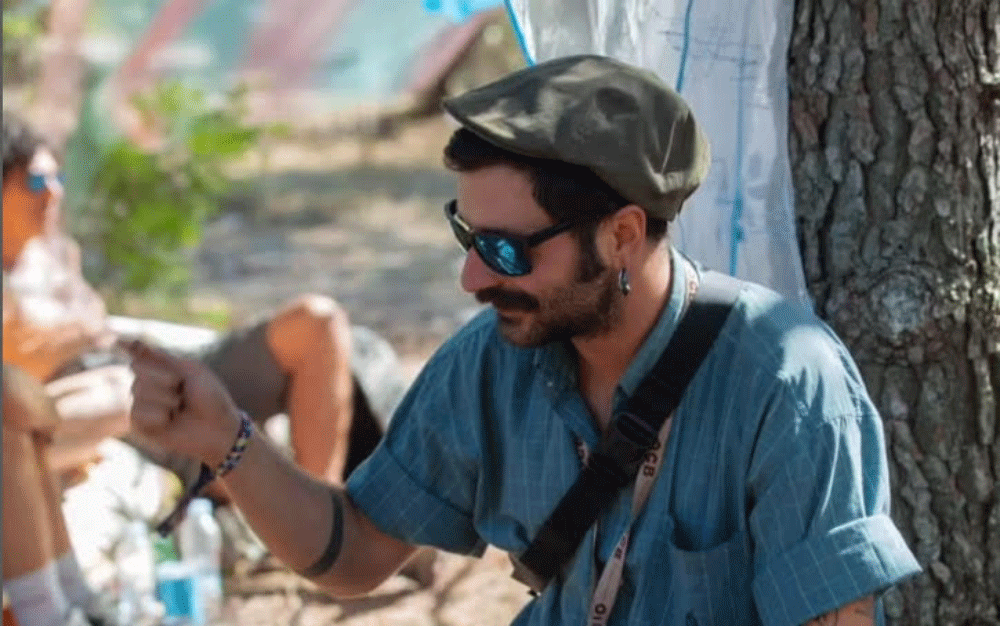
Kommoda has been exploring alternative music for nearly a decade. Since 2012, he’s delved into DJing, favouring minimal, dark techno while occasionally diving into deep dubstep and bass. His sets blend genres with a shadowy, immersive energy.

A thread runs through history – gleaming, fragile, tightly spun. Silk, once a symbol of wealth and empire, tells a story of domestication, labor, and control. The Fourth Cocoon is a space beyond utility, beyond heritage as commodity. Silk is explored as a speculative medium, an interface between species, technologies, and temporalities.
This international collective brings together the members’ expertise in media arts, creative technologies, visual art, costume design, and textile-based practices. Their work spans immersive installations, research-driven assemblages, and design explorations that merge traditional and digital approaches. What unites them is a shared commitment to experimentation, cross-disciplinary dialogue, and reimagining how materials, stories, and technologies can generate new forms of meaning.
Lavoslava Benčić is an intermedia artist, curator, and educator specializing in multimedia engineering and media arts. Her award-winning works have been exhibited in 24 countries, and she is known for leading art and electronics workshops. She also lectures on media production and integrated art practices at higher education institutions in Slovenia.
Žiga Pavlovič is a creative technologist who combines storytelling and interactivity in museum and artistic installations. He has worked on projects such as *Vrtn!ca* and *Nadvojvoda Janez, oče Meranovega*, where he used technologies such as Leap Motion, Kinect, and XR as dramaturgical tools. He works as a developer, mentor, and consultant, ensuring both system robustness and emotionally meaningful user experiences.
Born in Scotland and based on the west coast of Ireland, Marielle MacLeman studied Drawing and Painting and works across two-dimensions, sculptural assemblage and installation. The dialogue between materials and research is key – combining found or context-specific media with innovative craft techniques and references to interrogate their potential to produce meaning.
Mateja Fajt is a costume designer and researcher. She holds a master’s degree in costume design from the Academy of Theatre, Radio, Film and Television of the University of Ljubljana and has continued her doctoral studies at Yale University as a special research fellow within the Fulbright grant programme. She is an award-winning costume designer and has designed costumes for a wide range of performances and films.
Katarina Ekart works at the intersection of textile art, jewelry design, and the application of novel technologies in design and art. As an artist, she defines herself as an attentive observer, drawing inspiration from everyday life, natural processes, and their transformative consequences. Her practice is based on translating these observations into design articulations through various installations and artworks. She is currently developing her research at the Royal Academy of Fine Arts in Antwerp.
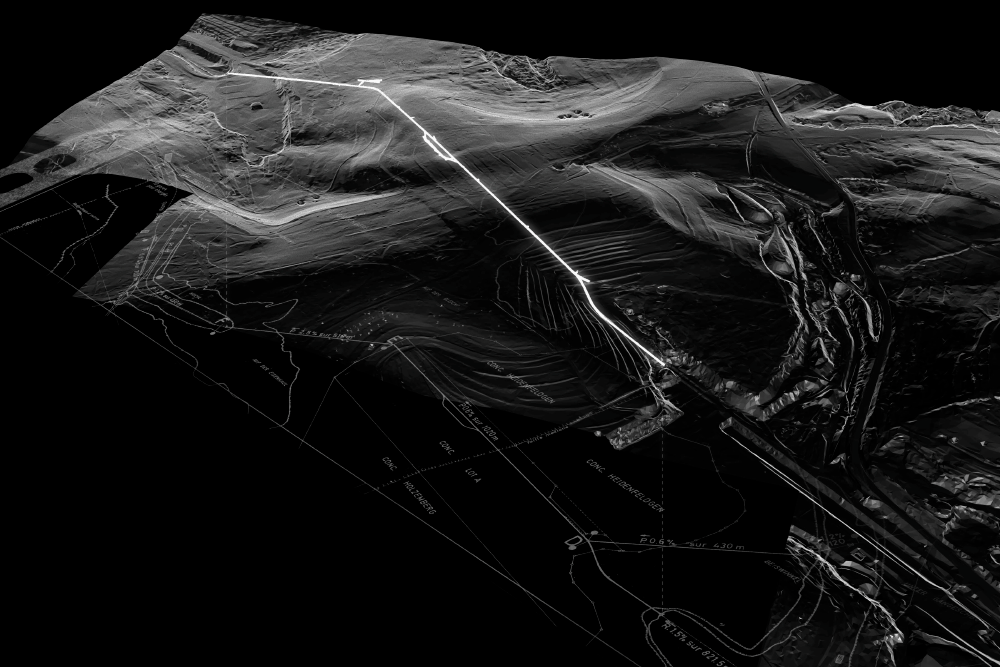
Once part of Luxembourg’s steel industry, a disused tunnel, now hidden and inhabited by bats, inspired the artist. Through digital capture, he transformed its complex industrial, ecological, and geological layers into a new post-digital artwork, revealing forgotten histories and reimagining the site’s presence in today’s technological and cultural landscape. The installation is part of the “Betrib” festival in Idrija (Oct 16–19, 2025).
www.betrib.si
Serge Ecker is a Luxembourg-based artist whose post-digital approach uses digital tools to capture, transform, and re-materialize real environments. His work examines how technology reframes spaces and histories, creating new ways to experience presence, memory, and transformation in our contemporary, complex, and often absurd world.

Container ships, the infrastructures of the digital economy, mines, and cityscapes of contemporary California are brought into an associative montage that expands via the soundtrack of improvisational musician Zsolt Sörés. In a film without dialogue, landscape images, and music produce a raw and psychedelic anti-effect in which musical delays reflect on the surfaces of the images and support the montage: individuals are networked, but Silicon Valley’s digital enterprises are inaccessible, and public spaces are closed off by smart fences.
Clemens von Wedemeyer, born in 1974 in Göttingen, Germany, currently lives and works in Berlin and holds a professorship in media art at the Academy of Fine Arts in Leipzig. The artist and filmmaker studied photography and media at the Fachhochschule Bielefeld and the Academy of Fine Arts Leipzig and graduated as a Meisterschüler of Astrid Klein in 2005.
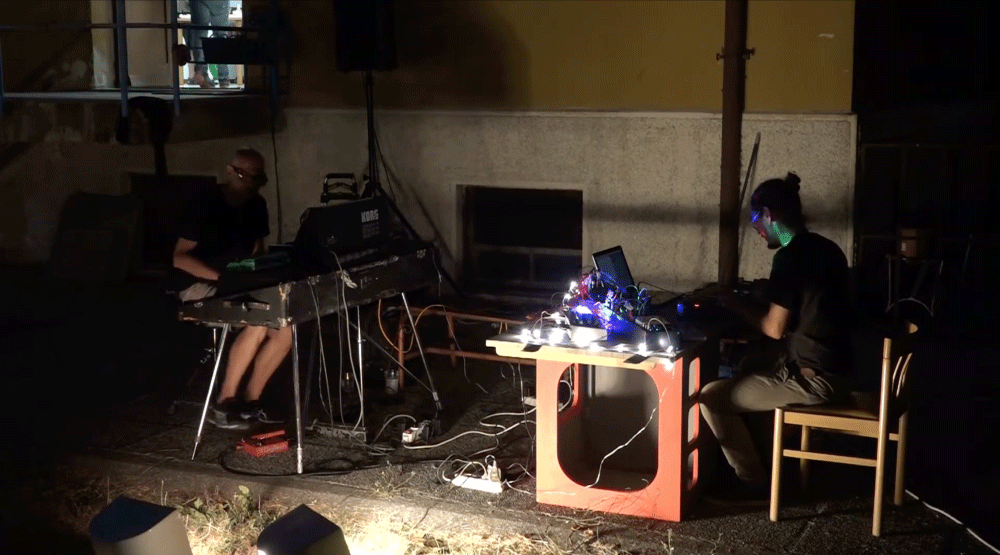
The Outspace Tunes of GulliDanda & Al Sagor are uneasy listening experiments for adventurous dancefloors. Out-of-sync LFO pulses, rhythmic patterns, and arpeggiators are merged into industrial wastelands, underwater psychedelic floors, and unexpected yacht rock bangers with Detroit Techno spleen. Jazz is the teacher and GulliDanda & Al Sagor got low marks.
Andrea Gulli and Giorgio Pacorig have been playing together for almost 20 years in a wide variety of settings, ranging from improvisation to film scores, from piano interactions to the extravagant party music of their band Maistah Aphrica.
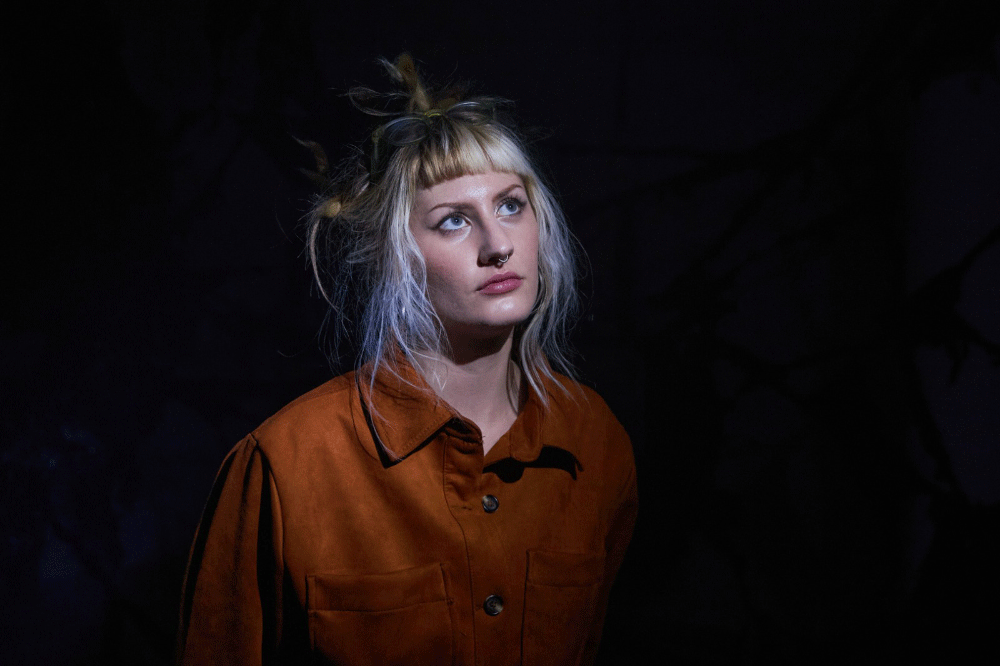
#000000 by Monika Milas is a spatial installation embodying change, decay, and cyclical renewal. Using melted black plastic, she creates organic forms that transform space, emphasizing process, instability, and transformation over permanence. For Milas, decay is generative – a stage in renewal. The digital code for black anchors the work as void and energy. Through melting, folding, and fusing, Milas channels states into sculptural gestures, confronting viewers with impermanence while revealing the contradictions and possibilities at the core of existence.
Monika Milas is a visual artist working with sculptural installations, drawings, and video art. A graduate of the Academy of Fine Arts Zagreb, she has exhibited widely, collaborated with Croatia’s electronic music scene, and in 2024 co-launched the experimental-ambient event programme SNOP with the musicians Kornet and Varboska.

Anemos (“wind”) “Graphia” (“writing”) is an interactive installation that uses the elements of a wind instrument to make real-time weather data tangible. Through attunement, visitors can perceive the weather simultaneously as a meteorological phenomenon and an embodied aesthetic experience, influenced by the wind’s dynamics, temperature, atmospheric pressure, and humidity.

At the heart of Echoes of Motion is the exploration of how sound and visuals interact in real time to express the fluidity of movement and the passage of time. The saxophonist's physical movements, alongside the generated sound, serve as a catalyst for the visuals, embodying the continuity and elusive nature of time. Each note played becomes a moment that ripples outward, shaping both the soundscape and visual narrative. In this situation, the visuals also influence the saxophonist’s performance, creating a feedback loop where cause and effect blur. As the saxophonist responds to the evolving visuals, the interplay deepens, prompting questions about the very nature of time: Is it the sound that ignites the visuals, or do the visuals inspire the sound? This intricate dance challenges the audience to experience time as a dynamic phenomenon, inviting them to reflect on the transient relationship between sound and image, and how each moment unfolds into the next.
Boštjan Simon is a saxophonist and electronic musician, founding member of audiovisual groups Etceteral (2019–), NOTA (2023–), and Vanilla Riot (2010–13). He also curates the festival of experimental music Sound Explicit in Ljubljana and the jazz section of the SAXGO festival in Nova Gorica. Focusing on improvisation through extended techniques, either using modular synthesizers or Max software, he has performed with his groups at several European music festivals and concert venues.Andrej Kobal is a Slovenian composer and sound designer. He creates original music, sound installations, and virtual instruments in Max MSP, also working with visualisations in Max Jitter and TouchDesigner. His instruments, seqMPErorand GranuRise, have gained international recognition. Kobal’s works have been showcased at major global institutions, including the Harvard Music Department (USA), MASS MoCA (USA), ADC (London), Synthfest UK, VISIONES SONORAS (Mexico), and all major Slovenian institutions.
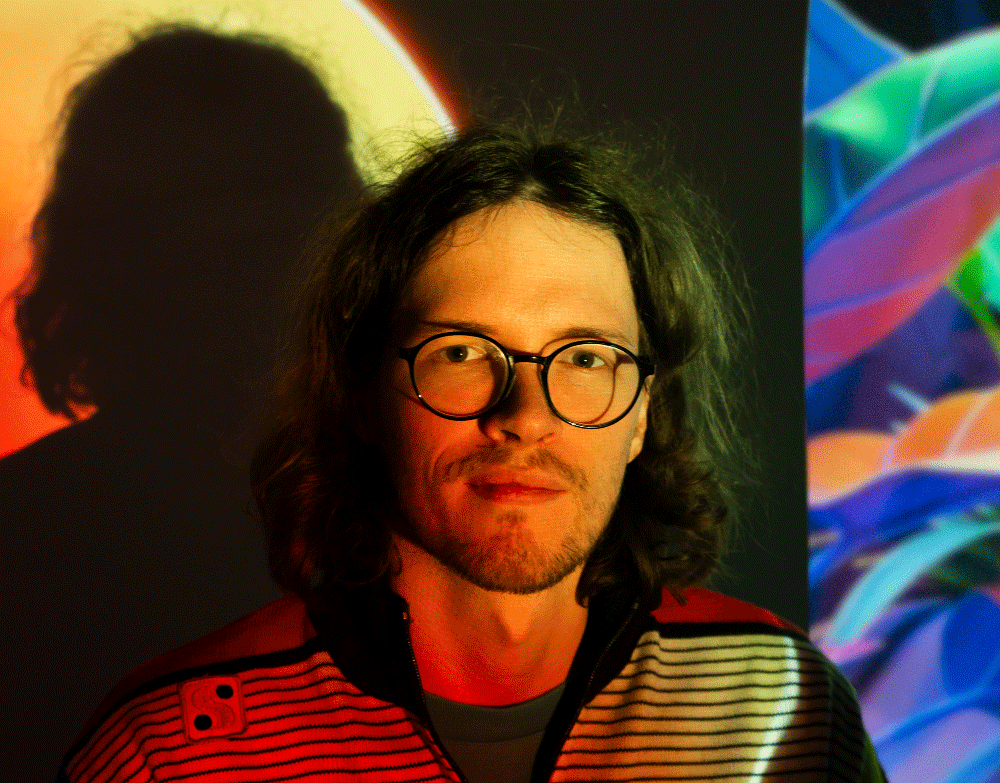
Offered in two versions, for both younger and adult audiences, this workshop explores how artificial intelligence is transforming creativity in art and everyday life. Participants are introduced to the creative process, tools, and challenges that shaped the video game Solandium 2063, and they also get to see the author’s pioneering Slovenian AI film Rooted in Code. The workshop encourages imagination and creativity, while also fostering a critical understanding of the technologies that will profoundly shape our future. The programme brings together children, youth, and adults around artistic and social questions regarding this era of artificial intelligence.
The focus of the new media artist Nejc Trampuž is socially, technologically, and environmentally engaged critique. He conveys it through works that move between different contemporary, technology-related media, and experimental approaches. He was awarded a bachelor’s degree and received a master’s degree in photography from the Academy of Fine Art and Design in Ljubljana, and his work has received multiple awards. He has exhibited at many solo and group exhibitions and festivals in both Slovenia and abroad, participated in panel discussions, and served as a member of professional juries.
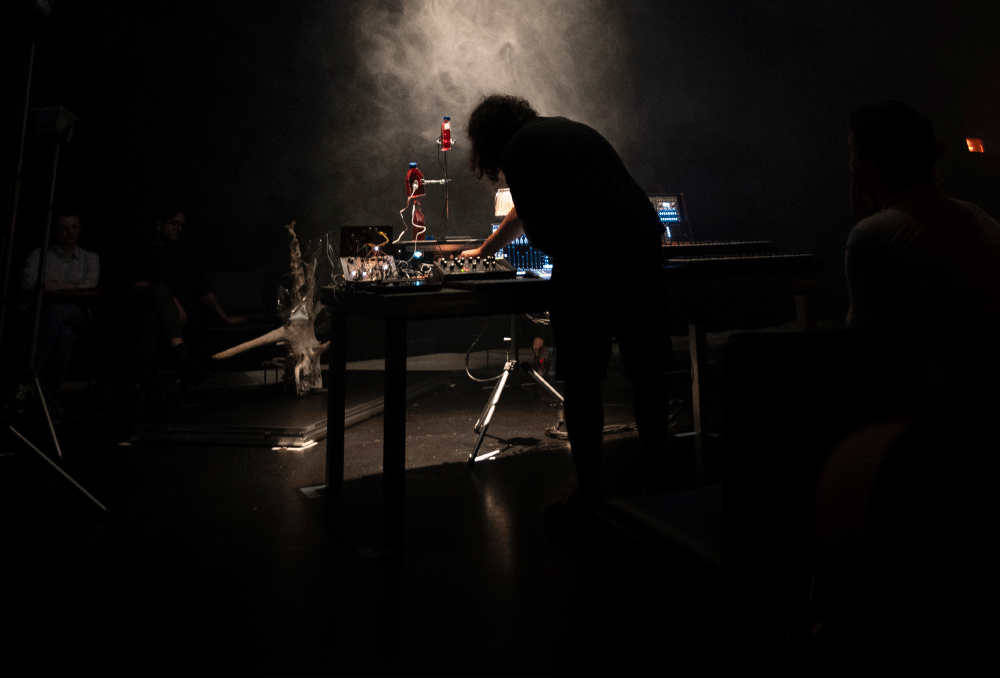
The workshop is intended for anyone interested in learning the basics of electronic music creation. Participants will become familiar with working in music software, using synthesizers and effects, and exploring the process of composing unique musical pieces. They will have the opportunity to imagine and create their first electronic music track or further develop their existing practice.
Andrej Kobal is a Slovenian composer and sound designer with more than 17 years of professional experience. He works in the fields of music composition, sound design, film and theatre music, sound installations, and the development of unique virtual instruments. His main tool is Max MSP, and he is also the author of the granular synthesis instrument GranuRise, which has received international recognition. He presents his work through concerts, performances, lectures, and installations worldwide.
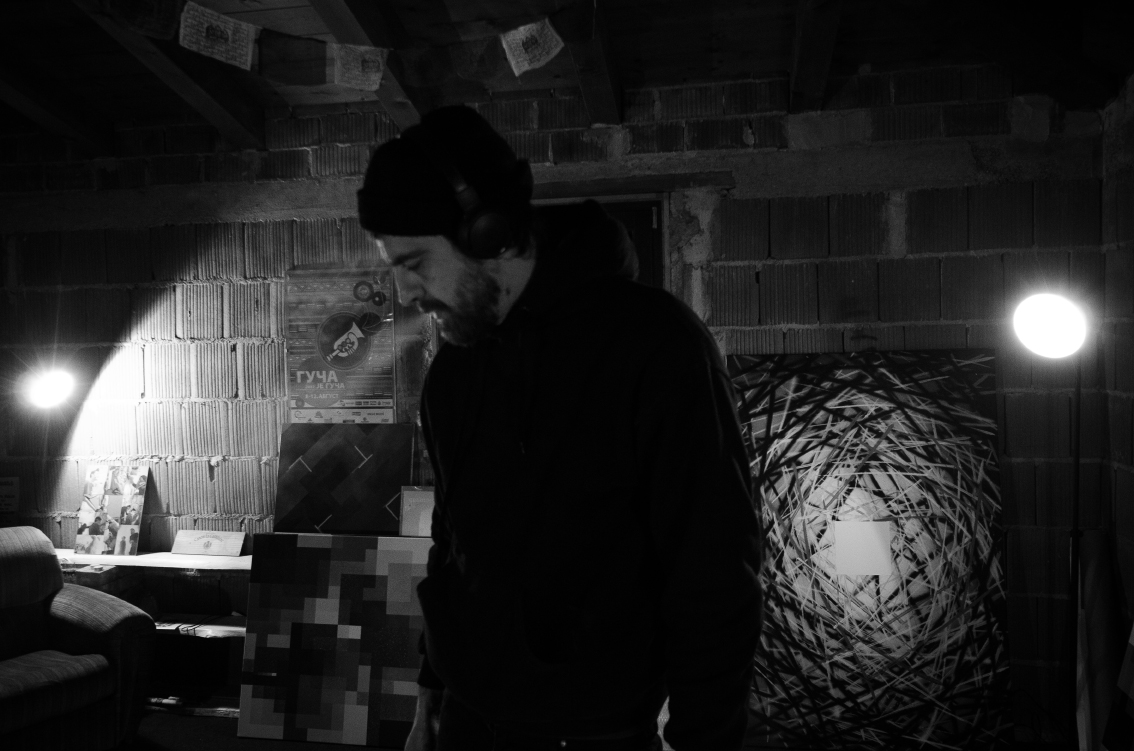
Suspended between past and present, the columns beneath the Slovenian National Theater in Nova Gorica evoke ideal spaces that have disappeared from the former Yugoslavia. Memories imprinted on living skin. This work questions the meaning of belonging: when collective memory fades, we need to decide whether the question to ask ourselves is “What must we not forget?” or “What can we not forget?”
Enrico Tuzzi is a leading exponent of European post-graffiti art. His artistic career moves between abstract painting and multimedia projects, ranging from installation work to photography. At the core of his artistic and conceptual research lies the theme of personal and collective memory, explored through their interplay, tensions, and impact on identity and perspective.

How do we interpret and remember a human face? *Portrait of a Generative Memory* focuses on the subjective interpretation of personal memories by collecting information about the elements that people are able to memorize about a human face. Those elements are then combined and interpreted to generate a new series of abstract and unrepeatable portraits.
Indiara Di Benedetto is a multimedia artist currently based in Italy. Her artistic research investigates the storytelling possibilities of technology and objects to create contemporary narratives and future imaginaries about human and non-human relations in a socially and environmentally critical context. Her artworks have been exhibited at several venues, including the Ars Electronica Festival, ISEA2022 – 27th International Symposium on Electronic Art Barcelona, Castello d’Albertis – Museo delle Culture del Mondo, the CYENS Centre of Excellence, and 1 Metro Sotto la Metro.
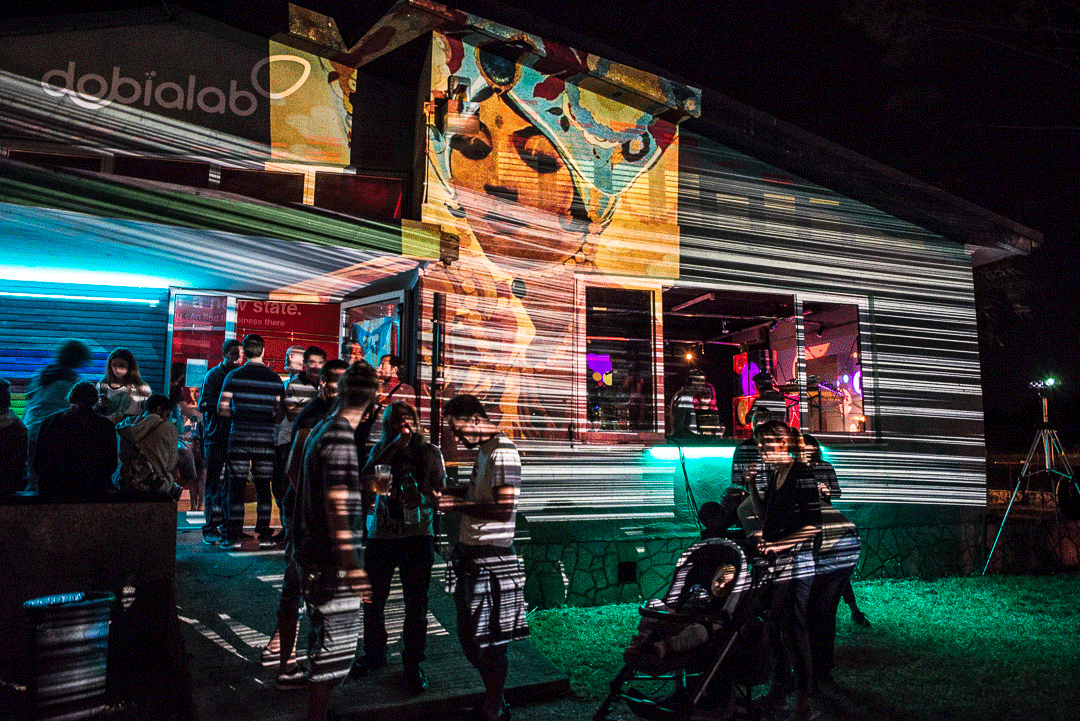
Hybrida Light Show is a live performance that combines images and music, transforming space with light, color, and sound. A sensory canvas adaptable to any context, it merges digital technologies with vintage techniques from light shows of the 1960s and 1970s, such as slides, photographs, and digitized films.
Hybrida was founded in 2003 in Tarcento to promote contemporary music and innovative arts in Friuli Venezia Giulia. With over 700 concerts, festivals, workshops, and multimedia productions, it has become a national and international reference point, also active with a record label and the Forma Free Music Impulse festival.
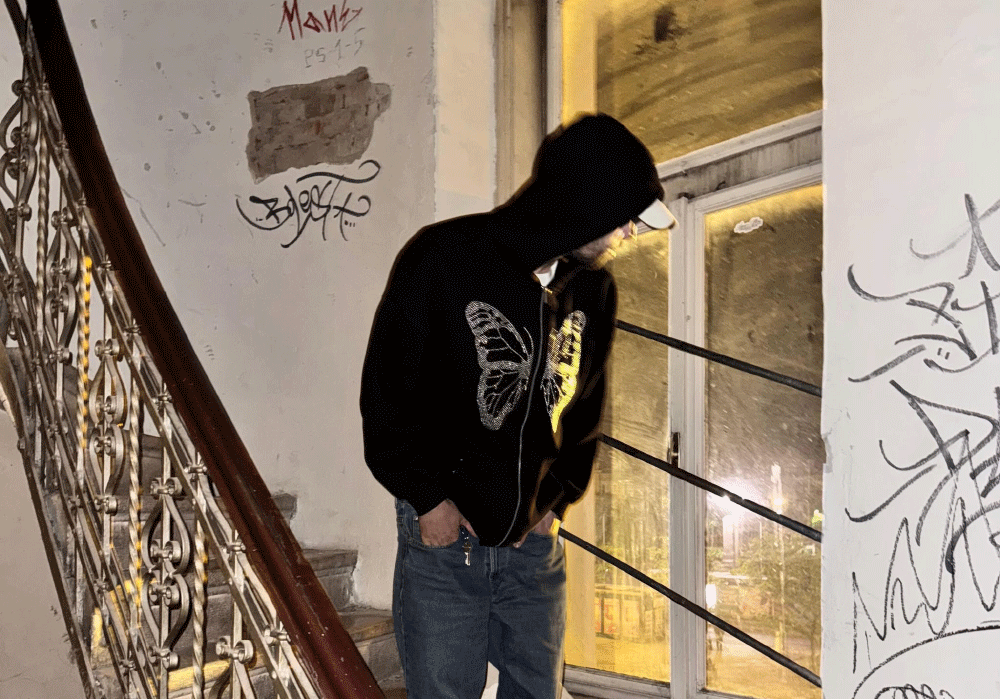
Djarma, a.k.a. Giancarlo, Armani, Sprint – Zagreb’s enfant terrible of the music scene. Active since 2016, he blends diverse electronic genres with bold energy. As founder of :D:S:P events and curator of the CARE-bare radio show on Komrad, he keeps pushing boundaries on and off the decks.

Roli is a techno/house DJ from Nova Gorica. After years of following electronic music locally and globally, he began his professional career in 2005. His reputation grew steadily, leading to collaboration with Reload events, one of Slovenia’s leading organizers, which boosted his regional presence and led to performances alongside world-renowned artists. Subsequently, he launched his own promoter brand, Analogue/Digital (A/D), dedicated to supporting local talent. With strong audience and performer feedback, Roli continues to pursue his lifelong passion for music.

Radial Drift is a short film examining how systems built to preserve life often produce exclusion. It traces the boundaries between bodies, infrastructures, and environments, exploring how matter circulates through them and how identity forms in the space between intake and expulsion. Moving through themes of transformation, decay, and renewal, the film uses metabolism as a framework to question dominant separations between nature and culture, organic and synthetic, self and other. Through filtration systems, architectural divisions, and biological processes, it reveals how even waste bears the imprint of societal values.
Dora Ramljak (b. 2001, Pula, Croatia) is a transdisciplinary designer and researcher working at the intersection of art, biology, and social practice. Originally trained as a photographer and designer, she studied at the Royal Academy of Art in The Hague (2019–2023), where she deepened her exploration of materials, bioengineering, and community-based research.
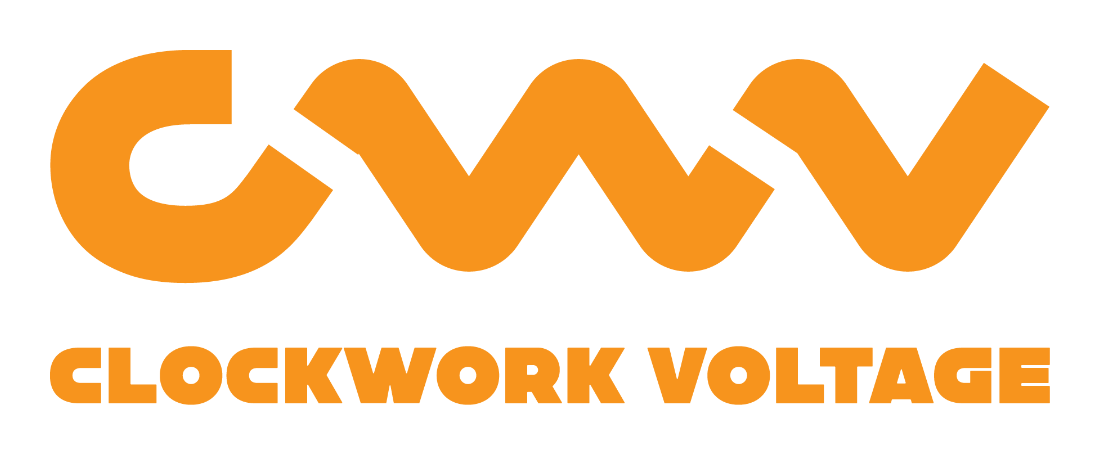
Clockwork Voltage gatherings bring together a Slovenian community united by enthusiasm for modular synthesizers and a broad circle of creators active across diverse artistic fields. The name references and twists the title of Stanley Kubrick’s *A Clockwork Orange*: in modular synthesis, the “clock” is one of the fundamental compositional elements that drives the shifting of output voltages.
The community’s main goal is to foster live performance—filling a gap in a field where successful concerts require both deep experience and technical skill. Its range is reflected in the first compilation *Happy Little Voltages*, created to promote domestic production and featuring 17 Slovenian musicians. The release offers both a listening marathon and a snapshot of current modular-based works, showcasing a remarkably wide expressive spectrum.
Alongside Eurorack modules, the community also embraces Buchla, Ciant-Lombarde, and a broad array of DIY analog devices and vintage synthesizers.
https://clockworkvoltage.si/

Today, as ocean currents weaken, coral reefs vanish, glaciers melt, storms intensify, floods multiply, and sea levels rise, it is time to rethink our connection with the environment. What once seemed distant in our individualized perception must become collective—worthy of preservation, coexistence, attention, and closeness.
This audio-video installation (HD 1080p, 15 min 19 sec, 5.1 surround sound) offers a multi-sensory experience, blending sound, moving image, and text to explore geological and human time and the memory of water.
Nadija Mustapić explores subjective and political aspects of space through expanded audio-visual documentary practices and immersive multimedia installations. Using poetic texts, non-linear editing, and spatial arrangements, she creates environments that evoke uncertainty and meaning at the intersection of the past and present. A site in her work becomes an encounter between body and moving image.
She has exhibited widely in Croatia and abroad, collaborated with Toni Meštrović and The Moving Crew, received numerous awards, and is a professor at the University of Rijeka.

An intermedia installation transferred from a gallery space to the exterior. A sound element in interaction with other performers. The techno-capitalist war machine needs a special “blood flow” of two fluids, two qualities: oil and blood. Peace is only a temporary gap, a space of friction between war machines. The future comes unknown (l’avenir).
Jasna Hribernik, a film director, creator of artistic videos, multimedia installations, and (post)media works, has developed a multifaceted hybrid practice with a distinct authorial signature. She is primarily interested in the ontological themes of today, such as the necessity of changing the paradigm that guides today’s development process and the possibilities of survival in the future. She is also an associate professor at the Academy of Arts, University of Nova Gorica.
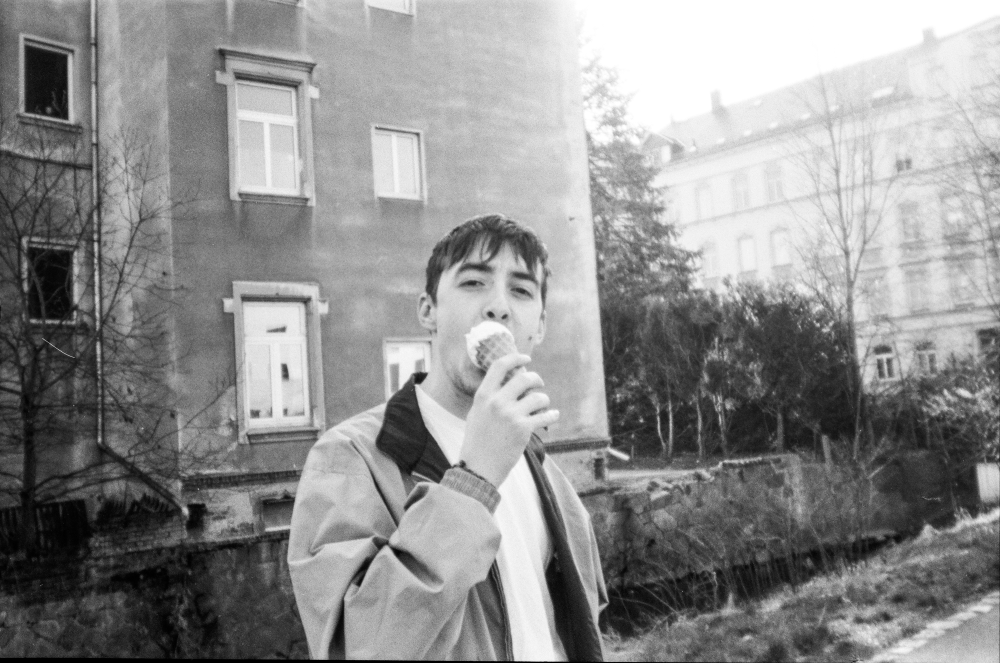
The performance is created in the moment of playing, when the author speaks to the audience through playing grand piano, on a backdrop of him continuously respraying a wall with different colors of paint. A rhythmic and deep interpretation of inner feelings and moments, expressed through color and sound.
Béla Bender is a sound and visual artist. Already in his childhood he began to experiment with the sounds and rhythms of his environment. His interest doesn't wane over time, it grows stronger. He wants to show his results.

Curated by: Tjaša Pogačar in collaboration with Neja Zorzut and Andrej Škufca
Organiser: Festival Pixxelpoint (Kulturni dom Nova Gorica)
Production: Šum
Co-production: Zavod Projekt Atol
Plaza Protocol has been developing exhibition situations and opening “portals” in various transitional sites since 2020. It has been exploring ways to “reimagineer” the plots and protocols that shape the way we relate to shifting, volatile environments, conjuring different visions of reality and future.
At Pixxelpoint 2025, Plaza appears at a site located between Nova Gorica and Solkan and suspended between troubled industrial histories and futures of urban development. Here, Plaza conspires with the atmosphere, as both a material and psychological phenomenon shaped by natural and anthropogenic forces, forming at the threshold between physical reality and imagination, bridging the external and internal.
A gust of air or a ray of light entering an enclosed space exerts an influence both material (air pressure, moisture, temperature...) and immaterial (psychological, emotional, magical...), announcing a sudden presence of something invading from the outside. The objects encountered in the building and its surrounding area speak especially to movements of air and natural light, which appear here as both physical effects and symbolic triggers or suggestions.The objects direct or reflect sunlight, welcome and receive winds, form micro-climates and psycho-vortexes, or mark and make the places where the atmosphere shifts and spirals. They act as strange artifacts or instruments conjuring atmospheric influences and modulations. Together, they activate the given location as a liminal area, suggesting a new protocol of perception — between fact and fiction, function and meaning, physics and magic, reason and superstition, environment and psyche — warping and weirding reality beyond these divisions.
Živa Božičnik Rebec explores the intersections of geological, technological, and infrastructural processes in her artistic practice, translating them through fictional narratives into semi-operational sculptural objects and installations. Her work has been presented in contemporary art institutions and platforms locally (including MSUM, MG, Aksioma, MGLC, Plaza Protokol in Ljubljana) and internationally (including Kućća in Zagreb, and the Biennale of Industrial Art, Labin).
Staš Kleindienst investigates painterly relationships between nature, history, and the ideology of images through complex narrative landscapes. He has received the OHO Group Award, the Recognition of Significant Artistic Works from the University of Ljubljana, and the Rihard Jakopič Award. His works are held in numerous private and public collections.
Tom Winkler operates at the intersection of sculpture and material research, focusing on the relationships between form, mass, and spatial context. After studying stone design, he pursued sculpture at the Academy of Fine Arts in Ljubljana and participated in international study programs in Lisbon and Belgrade. He has exhibited in numerous solo and group exhibitions.
Neja Zorzut works across the porous boundaries of painting and sculpture, object and surface, body and environment. Drawing from ecological philosophy and speculative theories, her work explores hyperobject entities, atmospheric infrastructures, and the condition of the body as shaped by the forces of a “natureless ecology.” She has exhibited in major local contemporary art institutions (including MG, MSUM, Galerija Equrna, and Nova pošta) and in international group exhibitions, including Kunsthalle Bratislava, SLUG Gallery, Leipzig, and HDLU, Zagreb. She is a recipient of the Rihard Jakopič Award for Young Artists.
Andrej Škufca’s practice examines the conditions of artistic production within technological capitalism, the infrastructures of contemporary production, and the relationships between materiality, technology, and the economy of vision. He has exhibited internationally, including at MAXXI, Rome; Ludwig Museum, Budapest; and Kunsthaus Graz, and recently presented a major solo project, *Intruders, uninvited into chaos*, in Obalne galerije Piran and Ravnikar Gallery Space in Ljubljana.
Ištvan Išt Huzjan’s sculptural and performative works create tensions between the poles of avant-garde and neo-avant-garde, public and private, material and immaterial, while reflecting on society through historical events, geography, and relational gestures. Huzjan graduated from the Academy of Fine Arts in Venice and completed several international residency programs during his career. He is the recipient of the Grand Prize of the 31st Biennial of Graphic Arts and exhibits regularly both locally and internationally, including at the Museum of Contemporary Art, Skopje; Bogossian Foundation, Brussels; SAVVY Contemporary, Berlin; and the 51st Venice Biennale.

Astrotop_X foregrounds non-human agency in the context of interstellar exploration by situating plants within a sensor-equipped capsule. Through algorithmic analysis, plants function as primary decision-makers in evaluating the habitability of a potential “Planet B.” In doing so, the project challenges human-centered conceptions of extraterrestrial environments, which the authors regard as extensions of terrestrial modes of operation. The first phase of the Astrotop project was developed in co-authorship with Nejc Trampuž, Dorotea Dolinšek, Andreja Gomboc, and pETER Purg. At the Festival, an enhanced version of the project will be presented, developed by the artist Dorotea Dolinšek.
Dorotea Dolinšek graduated in Painting from the Academy of Fine Arts in Venice and is currently completing a Master’s in Video and New Media at the Academy of Fine Arts in Ljubljana. Her interdisciplinary artistic research focuses on systems that enable survival in extreme environments, both in space and on Earth amid the current deep ecological crisis. Her works have been exhibited at numerous domestic and international contemporary art institutions.
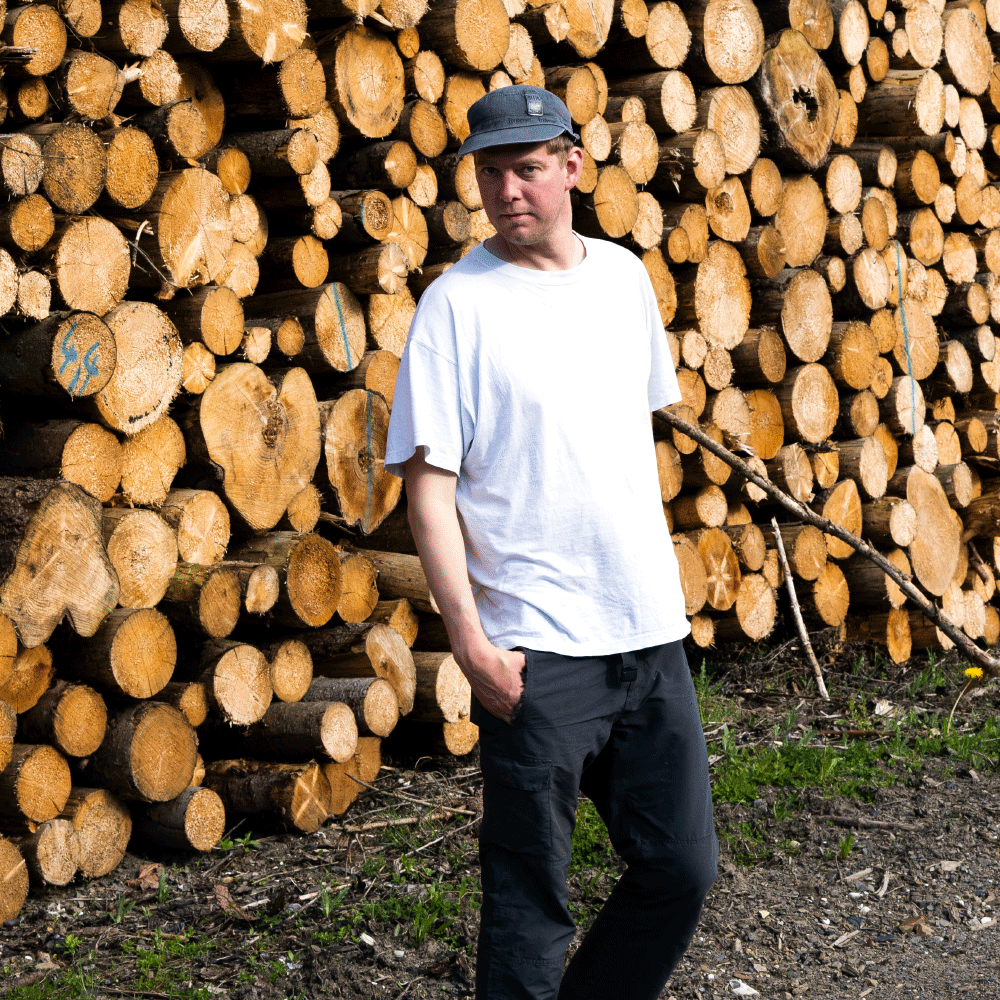
Fracture Zone is an environmental art and research project that investigates processes of ecological destruction driven by the human impact on Earth’s ecosystems. Climate change, monocultures, and the decline in biodiversity profoundly affect our ecosystems. In the work, Deufel engages with the resulting ecological and social challenges by exploring the mechanisms of destruction and regeneration, focusing on the bark beetle – an insect that, fostered by climate change, has become a plague devastating entire forests worldwide.
Felix Deufel is a sound artist and sound ecologist focusing on spatial sound, spatial hearing, and the role of soundscapes in society and the environment. His artistic oeuvre includes spatial installations, compositions, performances, and field research. Collaborative and interdisciplinary approaches play a decisive role in Deufel’s working methods and promote exchange, learning, and the expansion of artistic boundaries.
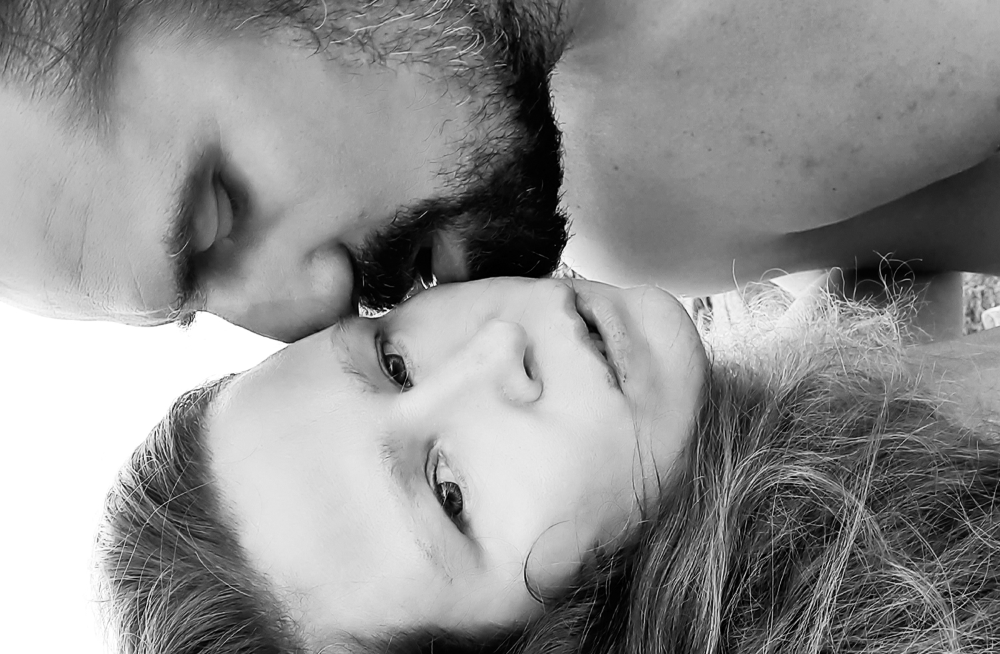
The stereo dub/remix KISS OF JUDAS was commissioned by Pixxelpoint 2025. It represents a derivative of the ALBUMsound architecture, created in 2024 for the 8-channel instrument TONSPUR_passage – Micro Museum for Sound, MQ Vienna, produced by Weckwerth/Szely. It is the microtonal voice of an amphibian, living its canon in an open oracle.
https://tonspur.at/soundworks/miha-horvat-feat-aphra-tesla-tonspur-for-ukraine/?lang=en
Aphra Tesla is a Slovenian artist, after whom the four-year award for intermedia achievements of the Kiblix festival, BELI APHROID (WHITE APHROID), is named. She is a visual artist, poet, activist, composer, sound architect, and interdisciplinary artist. She lives and works in Maribor, where she is also active in the contexts of the Transnational Guerrilla Art School GT22. More at https://huxportal.si/
Miha Horvat, living in Maribor, holds a Master of Arts in New Media (University of Applied Arts Vienna) and is a PhD student in Ethnology and Cultural Anthropology (FF Ljubljana). Since 2009, he has been the legal representative of the Sonda Foundation and since 2013, the responsible person of the GT22 Interdisciplinary Laboratory. The themes of his artistic creation, curatorial and scientific research are space, light, creative communities, and intermedia interventions. More at http://sonda.kibla.org/
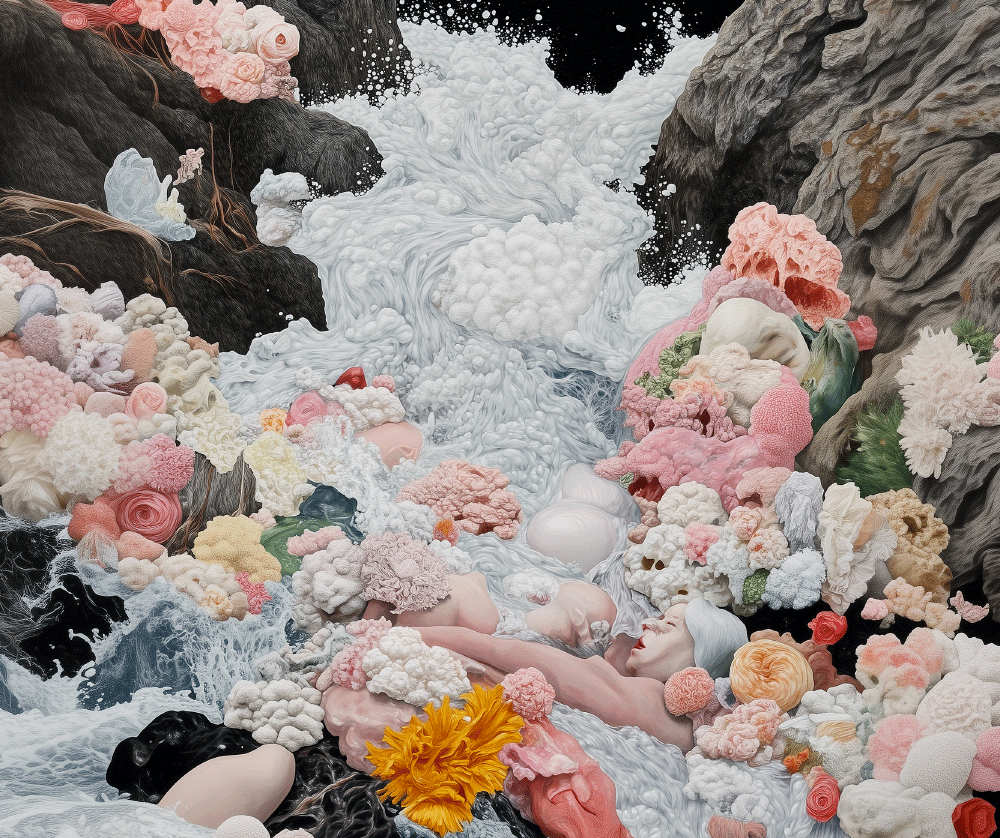
Pipedreams & Lushlakes is a VJ live set that visually presents the results of a speculative design workshop exploring water metaphors and transhumanist desires. The piece reflects on how technological fantasies clash with ecological realities, using VJing to express symbolic, emotional, and chemical aspects of water.
Petra Guljaš, Polina Komyagina, and Nabil Almanssour are emerging artists interested in speculative design, video performance, and the intersection of ecology and media arts. Their collaborative work was developed during a 2025 workshop led by Dora Đurkesac and Lilly Urbat in Pula, organized by Metamedij.
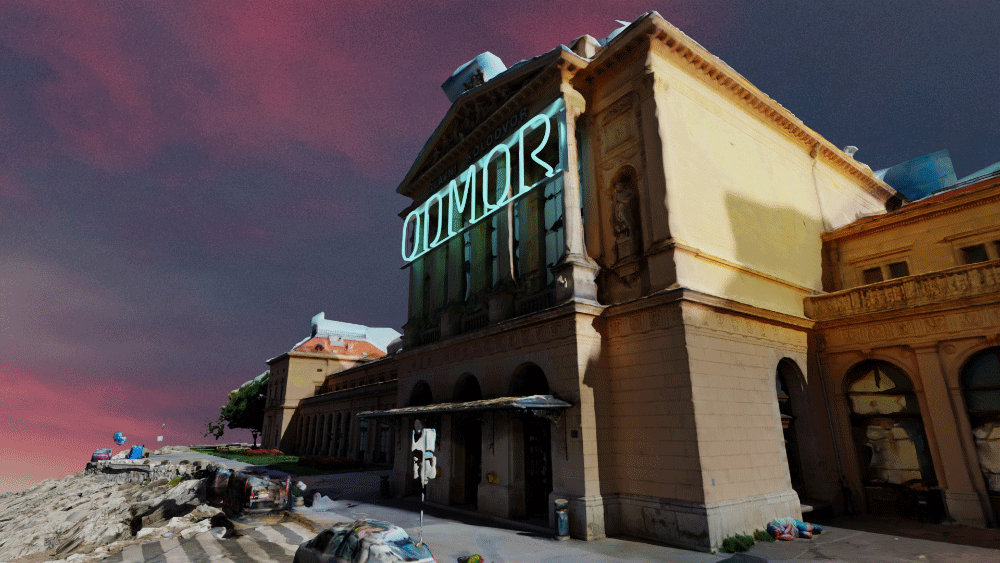
Vacation transforms Zagreb’s Central Station into an interactive art space, blending the real and the virtual. Built as a video game with photogrammetry scans – including Hvar’s coastline turned into a plastic sea – the project explores labour, leisure, and environmental concerns. Visitors navigate digital artworks, shifting from spectators to active participants in discovery.
Vitar Drinković, MA in Sculpture and Animation, has exhibited widely in Croatia and abroad, with solo shows, group exhibitions, and public sculptures. A 2021 Radoslav Putar Award finalist, he creates interactive devices and installations at the intersection of art, science, and technology. He is a member of the Croatian Association of Artists and the Croatian Freelance Artists’ Association.

Resonant Atmospheres explores ways of sensing weather through sensory infrastructures, drawing on ancestral knowledge associated with animism and meteorological divination. The work is informed by the histories of environmental sensing media and the geo-humanities, particularly in relation to atmospheric weather and the various forms that mediate ecological knowledge.

Smoking Mirror, a media performance, delves into the interplay between weather data and divinatory rituals, drawing inspiration from Tezcatlipoca’s mythology. At its core, the performance explores how ancient practices of interpreting atmospheric phenomena can be reimagined using contemporary technology, bridging the gap between the past and the present. By incorporating obsidian elements and copper traces as interactive materials, the presentation transforms weather soundscapes into immersive, multi-sensory experiences.
Juan Duarte Regino is an artist-researcher. His investigations concern the relation between the atmosphere, the act of listening, and the profound concept of attunement. His mission looks beyond conventional, extractive, or deterministic approaches to understanding the relationship between nature and technology. Instead, it ventures into ecological perspectives on our weather systems, granting voice to the natural agencies at play within the realm of weather. He has presented his work at ISEA, Media Art Histories, the World Forum for Acoustic Ecology, Xcoax, NIME, PACT Zollverein, Medialab Matadero, the Valssaamo-Cable Factory, Röda Sten Konsthall, the Goethe Institute – Beijing, the Titanik Gallery, the Nida Art Colony, BEK, and the Klaipeda Culture Communication Center.

The striking aesthetic and rigorous research of *Lament* invite audiences to explore death and regeneration of post-wildfire ecologies. In a more-than-human death-bed, Pevere becomes a tentacular soil creature, probing the space after the fire among heaps of soil and glass sculptures hanging low on the area. The music weaves field recordings, cello, and live electronics. The biotechnological elements of the installation and elements of the costume were sampled by Pevere after the 2022 Karst wildfires, while Penov explored the bioacoustics and hidden sounds of the burnt woods. The work is also a tribute to the Karst ecosystem and its vulnerable ecologies, which both artists learned to love during the years they have spent between Trieste and Gorizia. Lament was awarded the COAL Prize 2024 Transformative Territories Mention.
Known internationally for her otherworldly artworks with living matter, ecology, and biotechnology, Margherita Pevere is an artist and researcher addressing taboos like death, sex, and vulnerability. Her artworks are regularly exhibited internationally at prestigious and independent venues, and her practice extends beyond the arts through collaborations across science and society. Among the projects she co-initiated are the exhibition Membranes Out Of Order and the performance duo Fronte Vacuo (Donnarumma–Pevere). She obtained her MFA in Audiovisual Composition at the Conservatorio di Musica Tartini in Trieste and holds a Doctorate in Artistic Research at Aalto University (Finland).
https://margheritapevere.com
Ivan Penov is a musician and sound artist whose artworks are inspired by natural and rural contexts. His audio works distinguish themselves for featuring unusual sounds of musical instruments and field recordings. His musical output ranges from sound installations and acousmatic compositions to audiovisual works and music for dance performances. Across the diverse media, the “gestures” of both sound and video are often inspired by material and ecological processes, be it the vibration of a bow or the fermentation of yeasts. Besides his individual practice, he writes commissioned music pieces such as for the Ivana Kocevska Company/Macedonian Opera House. He holds an MFA in Audiovisual Composition from the Conservatorio di Musica Tartini in Trieste.
www.ivanpenov.com

Avant Garden is a sound garden. This improvised musical performance is born as an act of sound resistance — a free flow inspired by the rhythms and harmonies of nature. Sounds emerge in a space freed from the logic of profit, efficiency, and standardization. Inspired by natural cycles, biodiversity, and interdependence, this sound experience opposes the sterility of the capitalist system and the social fragmentation imposed by neoliberalism.
Piero Iuretig is a musician and teacher who graduated in jazz from the Conservatory “G. Tartini” in Trieste and also in musicology from DAMS. Active as both a performer and teacher, he combines musical practice with theoretical inquiry, with a particular interest in improvisation, pedagogy, and the evolution of contemporary musical languages. His numerous collaborations range from small ensembles, such as duo or trio projects (Dysnomia 3.0), to works for big bands (STJO).
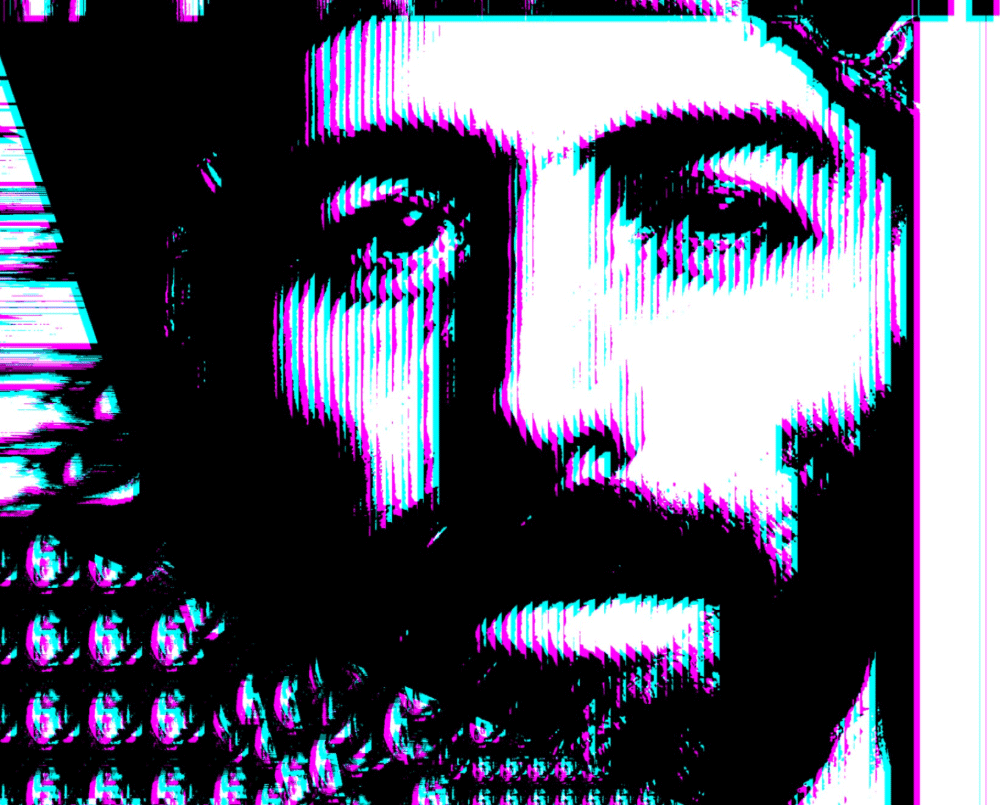
A visual live set improvising with a modular video synthesizer, a couple of videomixers, old cameras, CRT monitors, and a tangle of cables. Power to the analog!
Francesco Scarel is an independent researcher, curator, and facilitator in the artscience field, with the aim of communicating science and technology using artistic and creative languages. He founded Liminal Research, an NGO exploring science communication through artistic and creative approaches. His research in video art extends to video synthesis, exploring the potential of 20th-century analog media in a contemporary context, producing live visual sets through analog video synthesis and, sometimes, a touch of digital.

Mieko Suzuki is a sound-space scientist who, through her research of sound, remolds the perception of our surroundings. The work of the Japanese sound artist, composer, and hybrid performer is grounded in the idea of sound as both spatial and emotional matter—an idea her creative practice transforms into a wide range of outcomes.
Her sonic landscapes encompass drones, field recordings, electronic noise, and vinyl fragments, functioning equally well in the material context of clubs as in the contemplative spaces of theatre and galleries. Beyond sound, she ventures into the realms of visual art, performance, and contemporary theatre, notably as a co-curator of the multimedia series Kookoo at Berlin's OHM Gallery.
A co-production of Sajeta festival, with the support of EU Japan Fest.
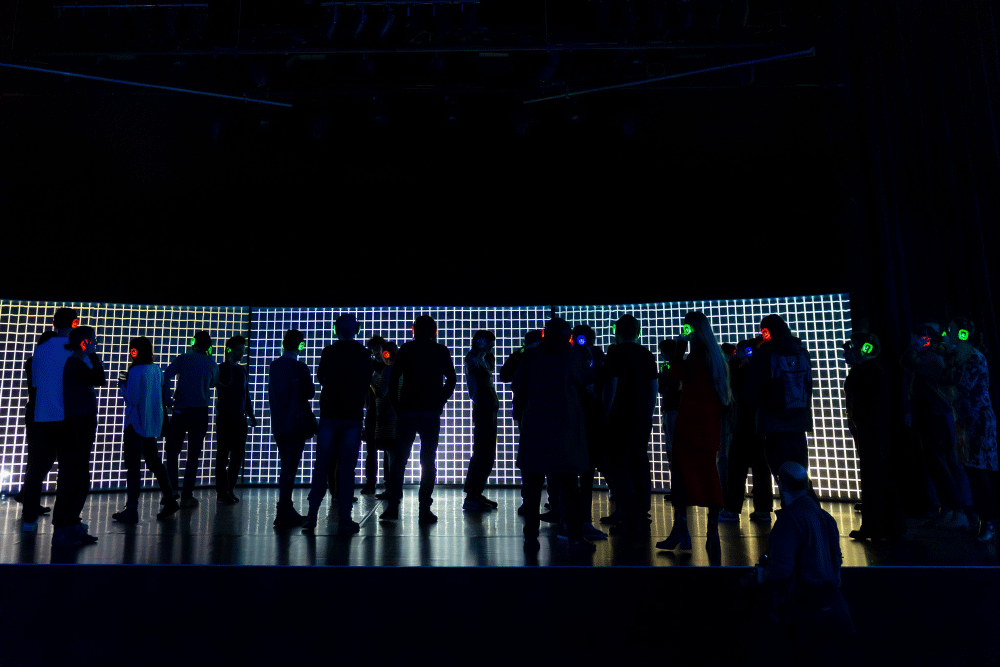
Veduta Crumbles I narrates and explores intimate stories of individuals facing the phenomena of ageing, the fragmentation of memory, the loss of meaningful, symbolic and social sites of value, freedom and the desire to integrate into social structures. It is based on the poem *V drevo* by the award-winning poet Ana Pepelnik. Veduta Crumbles I is a new media interweaving of three contemporary artists: Ana Pepelnik (voice), Miha Šajina – Shekuza (sound), and Lina Rica (visualisations/video).
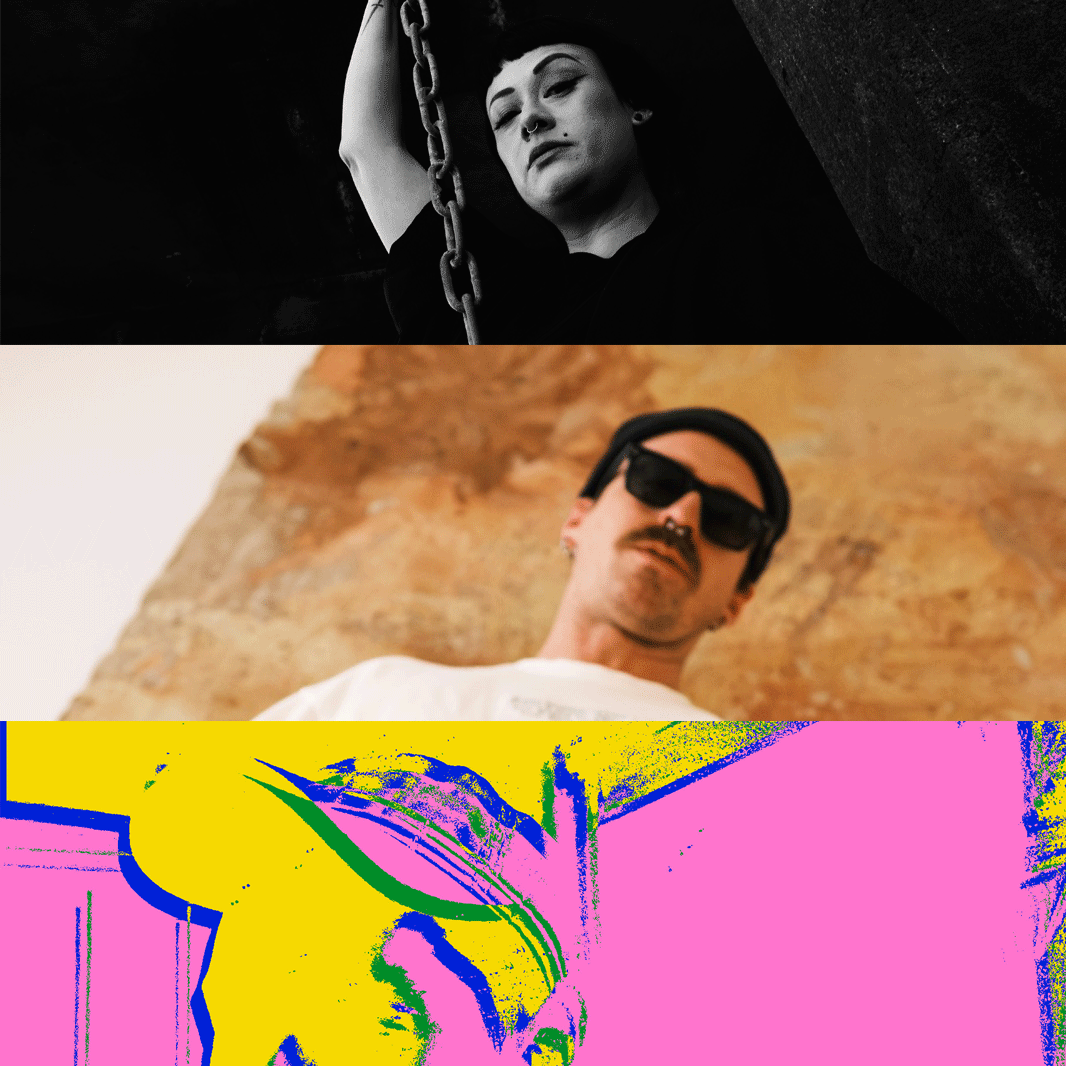
As day slips into night, xMobil powers down from a day of solar charging and powers up the sound system — a ritual of energy transfer, tuned to the rhythm of the river and the people gathered. This is not a stage, but a site: open air, low impact, and tuned to the landscape. Expect a gradual build — from textural, fractured electronics into deeper, body-driven pressure. A barefoot-friendly, jumper-required kind of night. Bring a torch, not a spotlight.
faux naïf is a selector and curator exploring the darker edges of electronic music, blending EBM, goth, darkwave, post-punk, and industrial, with elements of techno and electro. Rooted in the anarchistic spirit of 80s subcultures, her sets channel both raw energy and seductive tension, moving between atmospheric soundscapes and dancefloor intensity.
Riki G blends broken beat, deep house, minimal, and techno with a raw, instinctive style. No tricks, no filler — just tightly woven grooves that build pressure and pull you in deeper, track by track.
TBHVRST is a London-based producer and DJ working with fragmented rhythms, lo-fi textures, and unstable structures. The output spans breakbeats, ambient interference, and improvised electronics, often shaped for non-linear dance environments.